Discover + Heal + Grow🔭❤️🩹🌱 : A Taproot Therapy Collective Podcast
We felt the world had enough whispery mental wellness podcasts asking you to eat healthy and breathe deeply. We aim to be more honest and sometimes irreverent and funny about the forces that affect us all. Some episodes feel like hanging out with professional therapists at the bar after work, while others might feel like you’re listening in on a university class with professional thought leaders. We discuss creativity, intuition, trauma, and the overlap between the three in the spectrum of consciousness and the psyche. Approaching topics from a depth psychology and brain-based medicine perspective, we explore the archetypes inherent in arts, design, and mass media. We delve into neuroscience, cutting-edge trauma neurobiology, Jungian psychology, relationships, political psychology, and feature interviews with both amateurs and experts. Discover + Heal + Grow is the podcast of Taproot Therapy Collective, a complex PTSD and trauma-focused therapy practice in Birmingham, Alabama. Hosted by Joel Blackstock and the other therapists at Taproot, it focuses on consciousness and all the cool and messy parts of being human. Subscribe for new episodes where we unpack topics like: The neurobiology behind new age and eastern medicine concepts Psychology of artists and design Cutting-edge trauma therapy approaches Brain-based medicine Archetypes in culture and media Psychology of true crime Therapy representation in entertainment Burnout in helping professions And much more! Whether you’re a fellow trauma therapist or just a fellow seeker, we offer authentic conversations that challenge conventional thinking and explore the depths of consciousness and healing. Based in Birmingham, Alabama, Taproot Therapy Collective is the premier provider of therapy for severe and complex trauma, PTSD, anxiety, and depression. We provide EMDR, Brainspotting, ETT, somatic and Jungian therapy, as well as QEEG brain mapping and neurostimulation. Website: https://gettherapybirmingham.com/ #TraumaHealing #DepthPsychology #ConsciousnessExploration #MentalHealthPodcast #TherapyCollective #PTSD #EMDR #Neuroscience #JungianPsychology #BirminghamTherapy The resources, videos, and podcasts on our site and social media are no substitute for mental health treatment. Please find a qualified mental health provider and contact emergency services in your area in the event of an emergency. Our number and email at Taproot Therapy Collective are only for scheduling, are not monitored consistently, and are not a reliable resource for emergency services.
Episodes
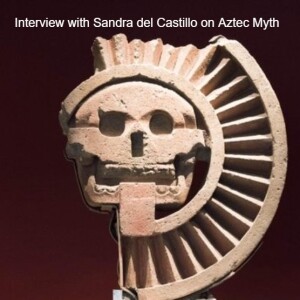
Monday Nov 06, 2023
Monday Nov 06, 2023
Blue Medicine Journal Podcast
Today, we have the immense pleasure of hosting an extraordinary guest, Dr. Sandra del Castillo. With an illustrious academic background, holding both a Ph.D. and an M.A. in Depth Psychology with a specialization in Jungian and Archetypal Psychology from Pacifica Graduate Institute, Dr. del Castillo is not just an academic but a true embodiment of the teachings she imparts.
As a teacher, storyteller, and ritual artist, she has traversed the rich cultural landscape of Mexico, living in four different states over fifteen years to connect with her ancestral roots. This profound journey not only inspired her dissertation on the Mexican Day of the Dead but also deepened her understanding of the archetypal wisdom woven into the fabric of Mesoamerican cosmovisions, philosophy, poetry, and mythology. Dr. del Castillo’s work comes at a critical Kairos moment in history, as humanity stands at the precipice of the Sixth Great Extinction.
Her artistry in ritual is a dance with the numinous, each piece a conduit of the soul’s language, offering healing and transformation to both the creator and the witness. With nearly three decades of facilitating ritual in diverse settings—from the classrooms of California and Oregon to the ancient pyramid sites of Mexico—she has honed her craft to perfection.
Dr. del Castillo also offers her wisdom through classes and workshops, including the transformative “The Art of Living Ritual: Re-animating an Ensouled Worldview.” Today, she brings her insights into our studio, sharing reflections and conversations that are not only thought-provoking but soul-stirring.
Her podcast, Blue Medicine Journal, is a treasure trove of Jungian wisdom, dedicated to the re-enchantment of our world. It's a call to awaken from the spell of disenchantment and journey into the blue—the soul realms—where dreams, myth, ritual art, and imagination become vital tools in the face of extinction.
So join us as we sit down with Dr. Sandra del Castillo, a Jungian mentor, ritual artist, dreamer, and the heart behind Blue Medicine Journal,
Website: https://gettherapybirmingham.com/Podcast Website: https://gettherapybirmingham.podbean.com/Podcast Feed: https://feed.podbean.com/GetTherapyBirmingham/feed.xmlTaproot Therapy Collective2025 Shady Crest Drive | Hoover, Alabama 35216Phone: (205) 598-6471Fax: (205) 634-3647Email: Admin@GetTherapyBirmingham.com
#DepthPsychology
#JungianPsychology
#ArchetypalWisdom
#SoulJourney
#RitualArt
#AncestralRoots
#DayOfTheDead
#Mythology
#PsycheAndSoul
#DreamsAndSymbols
#MexicanCulture
#Cosmovision
#Mesoamerica
More Info: https://gettherapybirmingham.com/

Saturday Oct 21, 2023
⚰️🧠💀The Psychology of Death with Kearney Smith RN and Alice Hawley LPC
Saturday Oct 21, 2023
Saturday Oct 21, 2023
Wishing everyone a spooky Halloween! 🎃👻🕷️🕸️Welcome to 'Beyond the Veil: Exploring the Psychology of Death' 🎙️. In this episode of the depth psychology podcast, we delve into the complex intersections of death, spirituality, and society. Join us as we navigate the profound concepts of mortality, drawing insights from Hinduism and Buddhism, examining modern burial practices, scrutinizing the impact of capitalism, all while drawing unexpected parallels from the cyberpunk world of 'Cyberpunk 2077' and the beloved nostalgia of 'Saved by the Bell' 🕉️☸️💀💰🕹️🔔.
Hashtags:
#BeyondTheVeil#PsychologyOfDeath#HinduPerspectives#BuddhistInsights#ModernBurialPractices#CapitalismAndMortality#Cyberpunk2077Analysis#SpiritualityInGaming#LifeAndDeath#ExistentialJourney#EternalCycle#SoulfulConversations#CulturalDimensions#NostalgiaRevisited#TranscendingMortality
yGPZC5anOrng7MFc0lKn
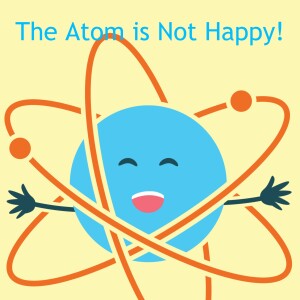
Monday Oct 16, 2023
Monday Oct 16, 2023
We welcome Alice Hawley LPC NCC LMFT to our practice and talk about evidence based practice in soft and hard sciences. Please check out Alice's bio here.
https://gettherapybirmingham.com/alice-hawley-lpc/
More to come!
Website: https://gettherapybirmingham.com/Check out the youtube: https://youtube.com/@GetTherapyBirminghamPodcast Website: https://gettherapybirmingham.podbean.com/Podcast Feed: https://feed.podbean.com/GetTherapyBirmingham/feed.xml
Taproot Therapy Collective2025 Shady Crest Drive | Hoover, Alabama 35216Phone: (205) 598-6471Fax: (205) 634-3647 Email: Admin@GetTherapyBirmingham.com
The resources, videos and podcasts on our site and social media are no substitute for mental health treatment. Please find a qualified mental health provider and contact emergency services in your area in the event of an emergency to a provider in your area. Our number and email are only for scheduling at Taproot Therapy Collective are not monitored consistently and not a reliable resource for emergency services.
#Jung #Therapy #psychology #EMD #DepthPsychology #anthropology #sociology #philosophy #mythology #psychology #psychotherapy
#SpiritualHealing
#TherapyJourney
#EvidenceBasedCare
#JungianPsychology
#SpiritualAwakening
#TherapeuticApproach
#EvidenceBasedResearch
#JungianTherapy
#SpiritualGrowth
#TherapyWorks
#EvidenceInPractice
#JungianAnalysis
#MindfulnessPractice
#TherapySession
#EvidenceBasedResults
#JungianArchetypes
#SpiritualWellness
#TherapyTools
#EvidenceBasedApproach
#JungianTheory
#HolisticHealing
#TherapyGoals
#EvidenceSupports
#JungianTechniques
#SpiritualBalance
#TherapySuccess
#EvidenceBasedTherapy
#JungianConcepts
#SoulfulHealing
#TherapyJourneys
#EvidenceBasedResults
#JungianPerspective
#SpiritualTransformation
#TherapyMatters
#ResearchBasedPractice
#JungianApproach
#InnerPeace
#TherapyBenefits
#ScientificEvidence
#JungianIntegration
#SpiritualEnlightenment
#TherapySupport
#ProvenEvidence
#JungianSelf
#SpiritualGuidance
#TherapyForAll
#PracticalEvidence
#JungianStudies
#SpiritualEmpowerment
#TherapySolutions

Saturday Aug 05, 2023
Saturday Aug 05, 2023
Check out the Book: https://www.amazon.com/If-Sounds-Like-Quack-American/dp/1541788877
Check out Matt's Website: http://www.matt-hongoltzhetling.com/
Interview with Matthew Hongoltz-Hetling on If It Sounds Like a Quack…
Join us for an in-depth conversation with award-winning journalist Matthew Hongoltz-Hetling as he reveals his journey into the bizarre world of alternative medicine in If It Sounds Like a Quack…: A Journey to the Fringes of American Medicine. In this candid interview, Matthew unpacks the fascinating stories of unconventional healers, the pitfalls of pseudoscience, and the growing influence of the "medical freedom" movement in America.
In This Interview:
Matthew’s investigative process and the challenges of reporting on fringe medicine
Insider stories of alternative treatments and unconventional health claims
The impact of rising healthcare costs and anti-science sentiment on American medicine
Discussion on the future of medical regulation and public health
Available Formats:
Audiobook Version: Experience the narrative on the go.
Video Version: Watch exclusive excerpts and behind-the-scenes insights.
Purchase the Book:Discover the full story and get your copy here:https://www.amazon.com/If-Sounds-Like-Quack-American/dp/1541788877
Learn More About Matthew Hongoltz-Hetling:Find out more about his work and follow his investigative journey through alternative media and top journalism platforms.
Don’t forget to like, subscribe, and hit the bell icon for more interviews and updates on groundbreaking stories in healthcare and journalism!
#Interview #MatthewHongoltzHetling #IfItSoundsLikeAQuack #AlternativeMedicine #MedicalFreedom #InvestigativeJournalism #HealthCare #Audiobook #BookReview #FringeMedicine
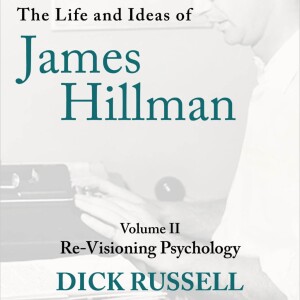
Thursday Jul 27, 2023
🎙️📘Interview with Dick Russel on The Life and Ideas of James Hillman 🧠💭
Thursday Jul 27, 2023
Thursday Jul 27, 2023
Dick Russell has published fifteen books on subjects ranging from natural history to the assassination of President Kennedy.
Check out Dick's Website: https://dickrussell.org/
Buy his book: https://www.amazon.com/Life-Ideas-James-Hillman-II/dp/195676318X 🎙️📘
Dive into the depths of the human psyche with #DickRussell as he unravels "The Life and Ideas of James Hillman" 🧠💭 Join us for an enlightening conversation on #JungianPsychology, #ArchetypalTherapy, and the journey of self-discovery! 🌌🕳️ Don't miss this insightful exploration into the realms of the mind and soul! 🌟🎧 #JungianPsychology #Schizophrenia #ArchetypalPsychology #shamanism #SchizophreniaSupport #JungianAnalysis #CollectiveUnconscious #SchizophreniaTreatment #DepthPsychology #SchizophreniaRecovery #AnalyticalPsychology #carljung
Website: https://gettherapybirmingham.com/Check out the youtube: https://youtube.com/@GetTherapyBirminghamPodcast Website: https://gettherapybirmingham.podbean.com/Podcast Feed: https://feed.podbean.com/GetTherapyBirmingham/feed.xmlTaproot Therapy Collective2025 Shady Crest Drive | Hoover, Alabama 35216Phone: (205) 598-6471Fax: (205) 634-3647 Email: Admin@GetTherapyBirmingham.comThe resources, videos and podcasts on our site and social media are no substitute for mental health treatment. Please find a qualified mental health provider and contact emergency services in your area in the event of an emergency to a provider in your area. Our number and email are only for scheduling at Taproot Therapy Collective are not monitored consistently and not a reliable resource for emergency services.
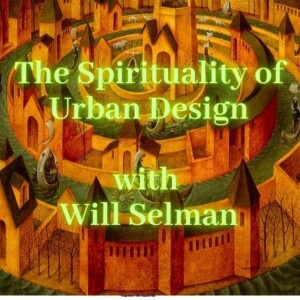
Monday Jul 17, 2023
🏛️📿🙏The Spirituality of Urban Planning With Will Selman
Monday Jul 17, 2023
Monday Jul 17, 2023
Central to the discussion is the ancient Greek concept of 'Temenos' - a sacred space extending beyond the confines of a temple into the city. This idea is crucial in reimagining urban spaces not just as functional entities but as extensions of sacred, communal areas. The book argues for viewing the entire city through this lens, transforming urban planning into a more holistic and respectful practice toward both the environment and its inhabitants. Urban planning and depth psychology may appear as disparate fields, yet their intersection offers novel insights into city design and architecture.
The article further explores how contemporary urban planning can benefit from this approach, especially considering today's societal and environmental challenges. It discusses the need for cities to transcend utilitarian views, integrating practicality with a deeper spiritual and communal essence.
There is also a critique of modern furniture design and architecture, contrasting the intentional and lasting designs of the past with the transient and utility-focused trends of today. This critique extends to discussing how the values reflected in our buildings and urban spaces have evolved and why a reevaluation of these values is essential.
Buy Will's Book, Temenos:
https://www.amazon.com/Temenos-Design-Experience-Urbanism-Spiritual/dp/1950186490
Check Out the Podcast:
https://gettherapybirmingham.podbean.com/
Get More Free Resources and Articles:
https://gettherapybirmingham.com/
Join us as we unravel the fascinating connections between our built environment, spiritual values, and collective consciousness, delving into topics like mythology, shamanism, integral spirituality, and much more. 🌌📖 Will Selman, a distinguished urban consultant and founder of the Institute for Symbolic Urbanism, takes us on an eclectic journey through time and culture, offering a fresh perspective on city life and its potential to be a source of psychic uplift. 🏛️💫 If you're a spiritual seeker or an urban advocate passionate about soulful placemaking, this episode is a must-listen! 🎧🌆 So sit back, relax, and get ready for an inspiring conversation that'll make you see cities and towns in a whole new light. Let's get started! 🎉🎧
The unfortunate state of our cities and towns is not so much a problem of design and policy as a reflection of a loss of spiritual values and purpose on a civilizational scale. But if our built environment reflects our deeper spiritual intentions, the experience of the city can be a source of psychic uplift. So argues urban consultant Will Selman in his tour de force book Temenos: The Design and Experience of Urbanism as Spiritual Path.
Selman begins with the assertion that the fundamental task of humanity, throughout time and across cultures, is the spiritual quest to awaken to greater insight and more conscious awareness. This is an evolutionary process on the personal and collective level, and, as he then illustrates, our built environments have an important role to play in that psycho-spiritual awakening.
Temenos takes the reader on an eclectic journey through ancient mythology, shamanism, Jungian psychology, integral spirituality, sacred geometry, money and materialism, the history of suburban sprawl, and urbanism as storytelling, to name a few stops along the way to his final destination—a new approach to design he calls “Symbolic Urbanism,” based on the example of L’Enfant’s plan for Washington, DC. Using images and compelling storytelling, Temenos is an engaging read for spiritual seekers who desire to discover the potential of urban towns and cities to support their journey, and for advocates of urban placemaking who desire to infuse their work with a more soulful approach.--------------------------------------------Will Selman, CNU-A, is a New Urbanist land planning consultant in Washington, DC and founder of the Institute for Symbolic Urbanism. A thirty-year member of the Congress for the New Urbanism, he is professionally focused on issues surrounding land development, zoning and comprehensive planning, the design of traditional walkable and sustainable mixed-use neighborhoods, community visioning and charrettes.
#UrbanSpirit #SpiritualUrbanism #TemenosBook #InterviewWithAuthor #UrbanDesign #CityLife #UrbanAwakening #SymbolicUrbanism #SacredGeometry #JungianPsychology #SpiritualQuest #Placemaking #NewUrbanism #SoulfulCities #UrbanConsultant https://gettherapybirmingham.com/
Website: https://gettherapybirmingham.com/Check out the youtube: https://youtube.com/@GetTherapyBirminghamPodcast Website: https://gettherapybirmingham.podbean.com/Podcast Feed: https://feed.podbean.com/GetTherapyBirmingham/feed.xmlTaproot Therapy Collective2025 Shady Crest Drive | Hoover, Alabama 35216Phone: (205) 598-6471Fax: (205) 634-3647 Email: Admin@GetTherapyBirmingham.comThe resources, videos and podcasts on our site and social media are no substitute for mental health treatment. Please find a qualified mental health provider and contact emergency services in your area in the event of an emergency to a provider in your area. Our number and email are only for scheduling at Taproot Therapy Collective are not monitored consistently and not a reliable resource for emergency services.
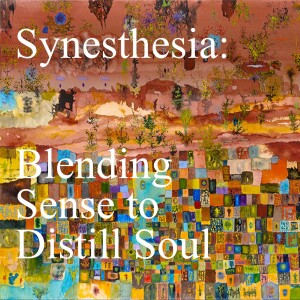
Monday Jun 26, 2023
🧮🎨🧠Synesthesia: Blending the Senses to Distill the Soul
Monday Jun 26, 2023
Monday Jun 26, 2023
In this captivating podcast episode, we delve into the profound world of #mindfulness, offering invaluable insights and practical techniques to enhance your well-being. Join our esteemed host and expert guests as they unlock the secrets to living a more mindful and fulfilling life. 🌟
Discover how to cultivate a greater sense of awareness and presence in each moment, empowering you to navigate life's challenges with clarity and grace. Dive deep into the transformative power of mindfulness, exploring its impact on stress reduction, emotional regulation, and overall mental health. 🧘♀️💆♂️💡
Through thought-provoking discussions, our guests share personal anecdotes and professional expertise, guiding you towards developing a mindfulness practice that resonates with your unique journey. Gain access to practical tips and strategies for incorporating mindfulness into your daily routine, whether you're a beginner or already familiar with its benefits. 🎙️✨
Immerse yourself in enlightening conversations, exploring various mindfulness techniques such as meditation, breathwork, and body awareness. Uncover the science-backed evidence behind mindfulness and its potential to foster resilience, improve focus, and cultivate compassion towards oneself and others. 🧠💚🌍
Whether you're seeking solace in a chaotic world or aiming to optimize your performance in various aspects of life, this podcast episode is your gateway to unlocking the transformative power of mindfulness. Listen now and embark on a journey of self-discovery, personal growth, and lasting well-being. 🎧🚀
Ranking well on #Spotify and other algorithms, this episode's valuable content and engaging discussions ensure it stands out among the vast sea of podcasts. Join the mindfulness movement and embark on a life-changing exploration today! #Podcast #WellBeing #MentalHealth #SelfDiscovery #MindfulLiving #PersonalGrowth 🌟🎙️🌍
Taproot Therapy Collective 🌱✨
Disclaimer: 🚨 The Healing Hour Podcast is not a substitute for mental health treatment. If you are in need of professional help, please consult with a licensed therapist or psychologist. 🧠💙
Join us on a journey of self-discovery and mental well-being as we dive into a wide range of topics related to therapy and mental health. 🗣️💡 Our passionate team at Taproot Therapy Collective is dedicated to providing valuable insights, practical advice, and inspiring stories to help you navigate your own mental health journey. 🌈🌿
Each episode of The Healing Hour Podcast offers a safe space for meaningful conversations, exploring subjects such as mindfulness, coping strategies, relationship dynamics, self-care practices, and much more. 🎧🌟 Our diverse range of guests, including therapists, psychologists, and individuals with lived experiences, share their expertise and personal stories to shed light on important mental health topics. 🎙️🤝
Remember, while we strive to provide helpful information and perspectives, this podcast is not a substitute for professional mental health care. Seeking support from qualified therapists or healthcare providers is essential for comprehensive treatment. 🙌💚
If you're ready to embark on a transformative journey of self-growth, join us for The Healing Hour Podcast. Subscribe now and tune in to gain valuable insights and practical tools to enhance your mental well-being. 🎉🔍
For more information about Taproot Therapy Collective and the wide range of mental health services we offer, including therapy sessions, group therapy, and workshops, visit our address at 🏢 2025 Shady Crest Dr, Suite 203, Hoover, AL 35216. Get directions via Google Maps: 🗺️ https://goo.gl/maps/cnverPNUPuxiPkbc8
To schedule an appointment or if you have any questions, reach out to us at ☎️ (205) 598-6471. For administrative purposes, you can also send us a fax at 📠 205-634-3647 or email us at 📧 Admin@GetTherapyBirmingham.com.
Remember, your mental health matters, and we're here to support you every step of the way. Let's embark on this transformative journey together. 🌟💙 #HealingHourPodcast #TaprootTherapyCollective #MentalHealthMatters #SelfCare #TherapyJourney
Website: https://gettherapybirmingham.com/Check out the youtube: https://youtube.com/@GetTherapyBirminghamPodcast Website: https://gettherapybirmingham.podbean.com/Podcast Feed: https://feed.podbean.com/GetTherapyBirmingham/feed.xmlTaproot Therapy Collective2025 Shady Crest Drive | Hoover, Alabama 35216Phone: (205) 598-6471Fax: (205) 634-3647 Email: Admin@GetTherapyBirmingham.comThe resources, videos and podcasts on our site and social media are no substitute for mental health treatment. Please find a qualified mental health provider and contact emergency services in your area in the event of an emergency to a provider in your area. Our number and email are only for scheduling at Taproot Therapy Collective are not monitored consistently and not a reliable resource for emergency services.
Wednesday Jun 21, 2023
🪑 You May Address the Chair: What we sit in tells us what we stand for
Wednesday Jun 21, 2023
Wednesday Jun 21, 2023
🎙️ The Psychology of Chairs: Unveiling Culture, Personality, and Design 🪑🌍🧠
Disclaimer: 🚨 The Psychology of Chairs podcast is not a substitute for mental health treatment. If you are in need of professional help, please consult with a licensed therapist or psychologist. 🪑💙
Welcome to The Psychology of Chairs, where we delve into the captivating connection between furniture, culture, personality, and psychology. Join us on an enlightening exploration as we uncover the hidden messages embedded in the design and function of chairs. 🗣️💺
Did you ever stop to consider the profound impact that chairs have on our lives? From therapy sessions to movie sets, the presence of chairs is more than just utilitarian; it reflects our deep-seated visual language and societal values. We'll unveil the secrets behind why therapists typically sit on chairs and patients on couches, and how this simple arrangement carries profound psychological significance. 🌿🏢
In this podcast, we'll dive into the intersection of design and psychology, exploring how chairs become powerful indicators of personality, cultural attitudes, and our visions of the future. We'll examine the ongoing debate between classicists and modernists in architecture, as they embody contrasting views on style, function, and society. Discover how these philosophical differences play out in the world of furniture design. 🌎🎨
Join us as we pay homage to visionary designers such as Charles and Ray Eames, whose iconic Eames chair revolutionized the industry and became a timeless symbol of innovative design. Uncover the stories behind their creations and how they accurately predicted the future, even when their work was initially misunderstood. Explore the connection between their visionary thinking and the advent of the internet, as they intuited the world of hyper-connectivity before it became a reality. 🚀📐
Through the lens of chairs, we'll unlock the psychological and cultural dynamics that shape our society. Discover how chairs serve as barometers of style, reflecting the evolution of language, attitudes, and experiences. Explore the profound symbolism of chairs in politics, religion, film, storytelling, and more. Gain insights into the power of design to communicate values, create context, and shape our perception of brands and spaces. 🌟🎥
Why write about chairs? Because they offer a unique gateway into understanding the human psyche and our ever-changing world. Chairs are not mere objects; they embody the essence of time, tradition, and innovation. They tell stories of generations, social attitudes, technological advancements, and cultural shifts. They invite us to contemplate the deeper meanings behind our everyday surroundings. 📚✨
At Taproot Therapy, we recognize the importance of design in fostering healing environments. Our therapy practice embraces both the cutting-edge advancements in brain-based medicine and the timeless wisdom of holistic traditions. We invite you to join us on this podcast journey, where we unravel the fascinating tales that chairs have to share. 🌿🪑
Remember, while The Psychology of Chairs provides intriguing insights, it is not a substitute for professional mental health care. If you require support, we encourage you to seek guidance from licensed therapists or healthcare providers. Your well-being is paramount. 🙌💚
Ready to embark on this enlightening exploration of chairs and their psychological significance? Subscribe now to The Psychology of Chairs podcast and join us as we unravel the intricate connections between design, culture, and the human mind. 🎧🔍
For more information about Taproot Therapy and our holistic approach to mental health, visit our address at 🏢 2025 Shady Crest Dr, Suite 203, Hoover, AL 35216. Find directions on Google Maps: 🗺️ https://goo.gl/maps/cnverPNUPuxiPkbc8 🌱
To schedule an appointment or reach out for any inquiries, contact us at ☎️ (205) 598-6471, send a fax to 📠 205-634-3647, or email us at 📧 Admin@GetTherapyBirmingham.com. We're here to support your mental health journey. 💙✉️
Not everyone will notice these details, but they will still feel them. The things that we don’t notice often speak to us louder than the details we are trying to listen too. People feel the weight of furniture, they feel real wood grain is different than laminated compressed saw dust bard that has wood grain printed on it. People know if they saw this same chair at Target or if it is a unique, maybe weird, piece of art that makes them slow down and think. People feel these details even if they don’t exactly know why or what they feel. The spaces that we inhabit affect us unconsciously and I wanted Taproot to feel different. That’s why all the offices are so different at Taproot. The style of each office is based on the personality and perspective of each clinician.
Most of the styles of chair at Taproot come from the Modern and Mid Century period. These periods interest me because the celebrated design and inovation in furniture design and manufacturing even if all the designers in the movement could not quite agree on what it was. How did the Mid Century Modern and Modern furniture movement come about?
The History of the Chair
Medieval Period
During the medieval period, when the Catholic Church held significant influence, thrones and seats for bishops and popes featured ornate carvings, luxurious fabrics, and precious metals. The craftsmanship and materials used underscored the divine authority attributed to these figures. Intricate religious motifs, such as depictions of saints or biblical scenes, were often incorporated into the design, emphasizing their spiritual role. In the context of religious leadership, thrones and seats were designed to visually and symbolically distinguish bishops and popes from ordinary worshippers. Elaborate materials, intricate details, and grandeur were employed to convey their exalted positions. These designs reflected the prevailing artistic and cultural styles of their respective eras.
Industrial Period
During the Industrial Revolution, the mass production of chairs led to increased affordability and availability. This shift in manufacturing techniques made chairs more accessible to the middle and working classes, allowing them to enjoy the comfort and convenience of seating that was previously reserved for the wealthy. As economic values shifted towards industrialization and mass production, the emphasis on efficiency and cost-effectiveness influenced chair design.
Modernist Period
The mid-20th century saw the rise of consumer culture and the development of new materials and manufacturing processes. With the increasing availability of resources and the desire for comfort and style, chairs became more than just functional items. They became a means of self-expression and a reflection of individual taste and lifestyle. The introduction of innovative materials and production techniques allowed for the creation of chairs that catered to different economic segments and societal needs. During periods of austerity or war, chair design often shifted towards simplicity and functionality, prioritizing utility over elaborate ornamentation. The minimalist designs of the post-World War II era, influenced by the need for practicality and rebuilding, reflected a societal shift towards simplicity, efficiency, and the rejection of excess.
In recent years, as sustainability and environmental consciousness have gained prominence, chair design has adapted to reflect these changing societal values. Designers have embraced eco-friendly materials, renewable resources, and sustainable production methods, aligning with the growing desire for environmentally responsible products. The focus on durability, recyclability, and ethical sourcing of materials has become integral to contemporary chair design.
What is Mid Century Modern Furniture
The Modernist Movement emerged as a response to the changing cultural landscape of the 19th century. Where older styles had been based on mimicking the power and extravagant resources of European nobility, now patients began to rethink the idea of what a chair is and what it could be. French and English styles went out of favor. Inspired by the principles of simplicity, functionality, and efficiency, new designers championed the idea of honesty in materials. By showcasing materials in their true form, devoid of unnecessary ornamentation, designers aimed to reflect the spirit of an evolving society. Things like gold, ornamentation and paint were not used to disguise wood. Instead wood was celebrated.
This led to the clean and stripped down archetypal design of modernism. One of the key aspects of mid century modernist design philosophy was the integration of manufacturing processes as part of design. Designers like the Eames understanding the capabilities and limitations of manufacturing processes, meant that they could create designs that were both efficient to produce and aesthetically pleasing. The used mass production not to make more money but make higher quality available to more people. This approach allowed them to create innovative and mass-produced furniture that was affordable and accessible to a wide audience.
Modern and postmodern design generally emphasized the importance of honesty in materials. Honesty of material means materials should be used in their truest form, showcasing their inherent qualities and characteristics. Don’t print plastic to look like wood, instead showcase all the neat things that you can only do with plastic. In the Eames Lounge Chair, molded plywood and leather upholstery, allows the natural grain and texture of the wood to be visible, and highlights the beauty of the materials instead of painting, printing, or covering it up.
During the Cold War era, game theory and the ideological battle between the West and the East played a significant role in shaping the expressive styles within the Modernist Movement. Mathematician John Nash's game theory influenced design to embrace individualism and personal expression as a response to perceived conformity in communist societies. This shift towards individuality fueled the emergence of unique and expressive works.
Remarkably, the influence of intelligence agencies, such as the CIA, cannot be ignored when examining the development of the Modernist art movement. The CIA covertly supported various artistic endeavors during the Cold War, including the promotion of Modernist art. This involvement aimed to showcase the creative freedom and individualistic spirit prevalent in the West, serving as a cultural weapon against the perceived conformity of communist societies.
One prominent figure within the Modernist Movement is Adrien Pearsall, whose designs left an indelible mark on the era. Pearsall's furniture had water-like curling lines. Some of it looked like water and others looked like boats. Sofas became gondolas and rafts that could sail around a living room like it was a venetian canal. Pearsall's iconic creations showcased a harmonious blend of functionality, aesthetics, and comfort. His style influenced the Nagare (流, flow) design language of Mazda cars.
During the rise of the Modernist Movement, there was a strong emphasis on individual expression and the celebration of uniqueness. While some iconic Modernist pieces achieved a delicate balance between form and function, others prioritized individualistic aesthetics over practicality, resulting in furniture that may be visually striking but less comfortable or usable. I am a fan of the minimalism, honesty in materials, and more natural appearance of designers like Pearsall. The harsh chrome and confusing juxtaposed materials of La Corbusier and HR Gigerish coldness of Mies van der Rohe, I could do without. I see them as dead ends in design and one of the risks of over indulging a modernist tendency.
[caption id="attachment_3101" align="alignleft" width="300"] Mies van der NO![/caption]
You won't see any chrome or fur at Taproot, but many hues of natural wood and leather. In fact, so many of our people bought the Kardiel Woodrow couches after they saw them at Taproot that Kardiel made us a brand ambassador. That was not expected or intended. If you are interested you can use the offer code TAPROOT at Kardiel.com. It helps us provide therapy to people at a reduced rate and you can get some nice furniture that will last longer than you.
German philosopher Hannah Arendt argued that humans exist in a condition of "natality," meaning that each person is born into a unique world and has the capacity to initiate something new. For Arendt, the world is the space where individuals can create and establish their own identities, engage with others, and participate in meaningful activities. Culture is formed through human activities such as labor, work, and action. The environment plays a crucial role in shaping and influencing individuals' experiences. Arendt recognized that the world is a dynamic and interactive space that individuals engage with. The environment provides the context and conditions for human action and facilitates the development of individual and collective identities.
One of my favorite authors, Robert Pogue Harrison writes that design and architecture are not merely utilitarian or functional but are imbued with cultural and aesthetic significance. He suggests that our living spaces reflect and shape our sense of belonging, identity, and connection to the world. He examines the ways in which architecture and design influence our experience of "being at home" and the impact of our surroundings on our well-being. Regarding chairs, Harrison notes that they mediate between the body and the environment. He discusses how chairs provide a space of rest, comfort, and contemplation, influencing our posture, movements, and interactions with others. The tools we use, especially the most essential ones, are either successfully connecting you to growth and beauty or failing to.
Many people make the case that these lounge chairs cost exorbitant amounts of money and are a luxury for the ultra wealthy. Some of them are ostentatious or downright stupid but that is largely because they are either rare antiques or made by the few remaining companies that employ people to build things. Again, we have forgotten what design means. Most of the chairs that we have at Taproot I didn't pay a dime for. They belonged to friends and family who were moving out of their houses or onto the next life. Somewhere found at garage or estate sales like the Niels Moller Model 71 chairs in the Neurostim room. Sure they needed work but they were designed to be worked on forever. Things we love need work. Things with no value we throw away. I had no problem dis and re assembling them into pieces because they were designed to be timeless not replaced next year.
I have tried and failed to put together a brand new $500 table from modern furniture companies without breaking it. That's fine, Wayfair will send you a new one for free because they know what it is worth. I was able to refinish and reupholster the antiques at Taproot for $30 in a few days. I could have sold them on Etsy, but I would rather share them with everyone who walks through the door. They were my late godmother's and I don't have room for them at home. My Godmother loved Carl Jung, labyrinths and depth psychology. I think of her when I see them and know she is still here. Myself and other therapists I work with have worked in practices that threw out and replaced more of an investment in Wayfair furniture annually than I spent to set up our entire practice. My kids will inherit that furniture. The chairs connect me and you and one day my children to the beautiful person my godmother was.
[caption id="attachment_3100" align="alignleft" width="284"]Repairing some furniture in the garage.[/caption]
Isn't it fun to sit with these ideas for a minute and remember a time when people made things out of love and for the sake of art and self discovery. What does it do to our mental health to live in a world where everything we eat, watch, put in our house and live in has become dispensable disposable garbage. We have forgotten what design means. People will talk about the beautiful "design" of an iPhone and then throw it away in a few month when the next one has rounder corners. Good design is timeless, even if it is the timeless experience of remembering the way a meal was plated or how it tasted. It lasted. Some beautiful designs of soft and hardware come out of Silicon Valley. I still wax nostalgic about my candy bar Sony Erickson college phone, but I'm weird. Realistically how many of you are framing photos and treasuring memories of each generation of iPhone that broke when you sat on it because it wasn't a chair. Generally most of high technology "innovations" are just disguises for triggering humanities worst addictive, obsessive, and competitive tendencies.
The reason for this is right there in the back of the iPhone. Designed by Apple in California! and then in tiny print made in china. Manufacturing is part of design. Or it was. We think that design is something that we can dream up in a vacuum and then outsource all the nitty gritty details of realizing our vision to someone else. As Charles and Ray Eames discovered when they built their first chair. You design it as you are manufacturing it. The design for their first chair was too hard for them to build themselves, so they started over with something the two of them could build before they sent it to a manufacturer. They wanted what they built to last and enrich the lives of those who used it. They weren't trying to sell you an Eames chair every year. They wanted to see the future for the beauty of what that future could be, not to sell it too you. The American brands without planned obsolescence, like Maytag Appliance, have gone bankrupt and been sold off. Prophets and profits are not the same thing. Humans want to live in the ego alone. We want to live within fads, and trends. Hyperconsuming free market capitalism exploits this. It is why consumerist capitalism will always skew aesthetic taste towards thoughtlessly modernist design and planned obsolescence. People are threatened by the things that take away their ego's control and point them back to a timeless reality and our own personal insignificance in the face of the numinous.
I like good design because it points us back to a greater psychological, spiritual and transcendental reality. I believe that we can build a better world than one where all of our interactions with people and the spaces we inhabit are not merely transactions. We need to rethink where we assign value and where we place our identity. We need to admit that the places we live and work in effect us and are worth our mindful attention. Not just as practical considerations but as intuitive creative projects for us to find our own and our collective humanities soul. Modernist designers sought to break away from traditional forms and create furniture that embodied their personal visions. This approach resonated with the American spirit of individualism. Breaking old ideas is always a risk but creation is a risky business. Good design is timeless because it comes from timeless elements and forms in the human psyche. It may take generations to map these unseen realms of our collective humanity through our intuition. We don't always know good design when we see, but I would argue we know it when we feel. Even more so, we know it when it sticks around. Arendt and Harrison are correct that changing our self begins with changing our environment and vice versa. If you want to change your life start by changing your chair.
This is my favorite chair
If you want to dip your toe into the water of modernist furniture here is a designer cheat sheet to get you started.
What are the Major Mid Century Modern Style of Furniture
Mid-century modern furniture encompasses various design movements and styles. Here's an explanation of some of the key design movements associated with mid-century modern furniture:
Bauhaus:
The Bauhaus movement, founded in Germany in 1919, had a significant influence on mid-century modern design. It emphasized the fusion of art, craft, and technology. Bauhaus furniture featured clean lines, geometric forms, and the innovative use of materials like tubular steel. Designers such as Ludwig Mies van der Rohe and Marcel Breuer were associated with the Bauhaus movement and created iconic pieces like the Barcelona Chair and the Wassily Chair.
Danish Modern:
Danish Modern design emerged from Denmark in the mid-20th century and is known for its craftsmanship, functionality, and simplicity. Designers like Hans Wegner, Arne Jacobsen, and Børge Mogensen were instrumental in defining this style. Danish Modern furniture often features organic forms, sculptural shapes, and the use of high-quality woods like teak and rosewood. Iconic examples include the Shell Chair by Hans Wegner and the Egg Chair by Arne Jacobsen.
Scandinavian Design:
While Danish Modern is a part of Scandinavian design, this broader design movement encompasses the styles of other Nordic countries as well. Scandinavian design emphasizes minimalism, functionality, and natural materials. Light woods, such as birch and pine, are commonly used. Clean lines and simplicity are prominent features. The work of designers like Alvar Aalto from Finland and Bruno Mathsson from Sweden contributed to the popularity of Scandinavian design during the mid-century modern period.
Arts and Crafts:
The Arts and Crafts movement emerged as a response to the mass production and industrialization of the Victorian era. Advocates of the movement, including Stickley and the Greene brothers, sought to revive traditional craftsmanship and celebrate the beauty of handmade objects. They emphasized the importance of skilled artisans and the integration of art into everyday life. Gustav Stickley, an American furniture maker, established his own furniture company, Stickley Brothers, in the late 19th century. He became a leading figure in the Arts and Crafts movement, promoting a style that emphasized simplicity, functionality, and the use of natural materials. Stickley's chairs often featured solid construction, exposed joinery, and handcrafted details.
Organic Design:
Organic design, associated with the work of designers like Charles and Ray Eames, sought to bring nature-inspired elements into furniture. Organic forms, flowing lines, and the use of molded plywood and fiberglass were key characteristics. The Eames Lounge Chair and Ottoman, with its molded plywood shell and luxurious upholstery, is a quintessential example of organic design.
International Style:
The International Style emerged in the 1920s and 1930s and influenced mid-century modern design. It emphasized simplicity, functionality, and the absence of ornamentation. Steel, glass, and concrete were commonly used materials. Architects and designers like Le Corbusier and Walter Gropius played a significant role in promoting the International Style and its impact on furniture design.
Who Were the Major Mid Century Modern Furniture Designers?
Hans Wegner:
Danish furniture designer, is often referred to as the "grandfather of chairs" due to his immense contributions to the field of chair design. His innovative and timeless chair designs have had a profound impact on the furniture industry and continue to be revered and admired to this day.
Wegner gained recognition and acclaim for his ability to create chairs that seamlessly combined form and function. He had a deep understanding of the human body and ergonomics, which allowed him to design chairs that were not only visually appealing but also comfortable and supportive. Wegner believed that a chair should be a perfect balance of aesthetics, functionality, and comfort.
Wegner was also known for his exploration of various materials and production techniques. He worked extensively with wood, especially oak and teak, using traditional craftsmanship methods. His chairs showcased the natural beauty of wood and displayed intricate joinery techniques, which became hallmarks of his designs. Wegner's meticulous attention to detail and his commitment to high-quality craftsmanship elevated his chairs to the realm of functional art.
Arne Jacobsen:
Celebrated for his minimal, simple, and distinct lounge chair designs. Notable pieces include the Egg Chair, Swan Chair, and Swan Sofa.
Eero Aarnio:
Known for his innovative furniture designs in the 1960s, particularly his plastic and fiberglass chairs. Explore the iconic Ball Chair, Bubble Chair, and more.
Eero Saarinen:
A Finnish American architect and industrial designer renowned for his mastery of varying styles. Discover his iconic designs, including the "Womb" chair and the "Tulip" or "Pedestal" group.
Eileen Gray:
A multifaceted artist known for her independent spirit and contributions to furniture design. Explore her notable works, such as the Bibendum Chair and the Eileen Gray Side Table. You might recognize her transat chair as the one that Fredo cant sit up in when he confronts his brother in The Godfather Part 2.
George Nelson:
One of the founding fathers of American Modernism, renowned for his contributions to cleaner urban design. Explore his well-known Modern Classic Furniture designs, including the Nelson Bench, Coconut Chair, and Marshmallow Sofa.
Isamu Noguchi:
A sculptor known for his flowing interconnectivity, reflected in his iconic Noguchi Table. Discover his collaborations with other midcentury designers in our extensive collection.
Le Corbusier:
A Swiss architect, designer, and urbanist who played a pivotal role in the development of Modern architecture. Explore his iconic LC-2, LC-3, and LC-4 chairs and sofa sets.
Ludwig Mies van der Rohe:
A German architect recognized as one of the pioneering masters of Modern Architecture.
R
Website: https://gettherapybirmingham.com/Check out the youtube: https://youtube.com/@GetTherapyBirminghamPodcast Website: https://gettherapybirmingham.podbean.com/Podcast Feed: https://feed.podbean.com/GetTherapyBirmingham/feed.xml
Taproot Therapy Collective2025 Shady Crest Drive | Hoover, Alabama 35216Phone: (205) 598-6471Fax: (205) 634-3647 Email: Admin@GetTherapyBirmingham.com
The resources, videos and podcasts on our site and social media are no substitute for mental health treatment. Please find a qualified mental health provider and contact emergency services in your area in the event of an emergency to a provider in your area. Our number and email are only for scheduling at Taproot Therapy Collective are not monitored consistently and not a reliable resource for emergency services.
#Jung #Therapy #psychology #EMD #DepthPsychology #anthropology #sociology #philosophy #mythology #psychology #psychotherapy

Saturday Jun 17, 2023
🏛️Frank Lloyd Wright and the Psychology of Architecture
Saturday Jun 17, 2023
Saturday Jun 17, 2023
#FrankLloydWright #DesignThinking #psychology
🏛️✨ The Psychology of Architecture: Unveiling the Influence of Frank Lloyd Wright 🌟🔮 Explore the profound impact of 🏗️🧠 #architecture as we dive into the inspiring world of #FrankLloydWright! 🌆✨ Discover how Wright's visionary process transcends boundaries, resonating with #psychology, #design, and beyond. 🌌 Join us on this captivating journey where soft sciences meet intuitive design, and where the beauty that defies words awaits. 😍🏡✨ Immerse yourself in the transformative power of Wright's spaces, perfectly blending with nature, functionality, and deep symbolism. Embark on a captivating exploration into the #psychologyofarchitecture today! 🚀🎥🔍 🔑 #ArchitectureInspiration #DesignThinking #SpatialPsychology 🌿 #NaturalHarmony #FunctionalDesign #SymbolicSpaces 💡 #ArchitecturalPhilosophy #HumanSpirit #TimelessBeauty Website: https://gettherapybirmingham.com/Check out the youtube: https://youtube.com/@GetTherapyBirminghamPodcast Website: https://gettherapybirmingham.podbean.com/Podcast Feed: https://feed.podbean.com/GetTherapyBirmingham/feed.xmlTaproot Therapy Collective2025 Shady Crest Drive | Hoover, Alabama 35216Phone: (205) 598-6471Fax: (205) 634-3647 Email: Admin@GetTherapyBirmingham.comThe resources, videos and podcasts on our site and social media are no substitute for mental health treatment. Please find a qualified mental health provider and contact emergency services in your area in the event of an emergency to a provider in your area. Our number and email are only for scheduling at Taproot Therapy Collective are not monitored consistently and not a reliable resource for emergency services.
Website: https://gettherapybirmingham.com/Check out the youtube: https://youtube.com/@GetTherapyBirminghamPodcast Website: https://gettherapybirmingham.podbean.com/Podcast Feed: https://feed.podbean.com/GetTherapyBirmingham/feed.xml
Taproot Therapy Collective2025 Shady Crest Drive | Hoover, Alabama 35216Phone: (205) 598-6471Fax: (205) 634-3647 Email: Admin@GetTherapyBirmingham.com
The resources, videos and podcasts on our site and social media are no substitute for mental health treatment. Please find a qualified mental health provider and contact emergency services in your area in the event of an emergency to a provider in your area. Our number and email are only for scheduling at Taproot Therapy Collective are not monitored consistently and not a reliable resource for emergency services.
#Jung #Therapy #psychology #EMD #DepthPsychology #anthropology #sociology #philosophy #mythology #psychology #psychotherapy
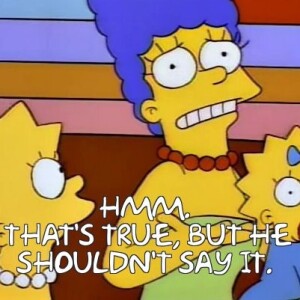
Wednesday May 31, 2023
😈Icky, Mean, Hateful: On the nature of evil in psychotherapy
Wednesday May 31, 2023
Wednesday May 31, 2023
#EvilRevealed #AuthenticHonesty #RelationshipCounseling
Join us on this thought-provoking episode of GetTherapyBirmingham.com's podcast, "Taproot Therapy Collective" 🎙️, as we explore the profound impact of labeling and confronting bad behavior in relationships. Discover how accurately identifying and acknowledging problematic patterns, regardless of their size, can be the key to fostering successful transformations.
In relationship counseling, it's not the size of the problem that determines success; it's the willingness to accurately label and agree on the need for change. From monumental challenges like addiction or infidelity to seemingly minor issues like avoidance and white lies, the biggest predictor of success is the acknowledgment of the problem and the commitment to transform. 🔒❌
In this episode, we dive deep into the nature of evil and its origins in rationalization and avoidance. 🤔 We unravel how avoiding the label of bad behavior perpetuates negative patterns and shields us from personal growth. We all bear the responsibility to change, but when someone deliberately chooses to make the world a worse place, it's crucial to be honest about their actions. Defend their soul's potential, but not their refusal to change. 🔀💡
We challenge societal norms that discourage speaking ill of the family or the deceased, and instead advocate for authentic honesty as the foundation of meaningful change. After all, if we lack authenticity, what else do we have? Join us in this candid conversation as we unravel the complexities of evil, personal growth, and the power of embracing genuine honesty. 🗣️💡
Get ready to shift your perspective, engage with thought-provoking insights, and explore the transformative power of authenticity. 🌱🌟 Tune in to this enlightening episode by visiting GetTherapyBirmingham.com/podcast or clicking the link in our bio. 🎧✨
For more information about relationship counseling and therapy services, visit GetTherapyBirmingham.com or call us at (555) 123-4567. Our experienced therapists at Taproot Therapy Collective are here to support your growth, healing, and positive change. 🌻💚
Disclaimer: The views and opinions expressed in this podcast are for informational purposes only and should not be taken as professional advice. Please consult with a licensed therapist or counselor for personalized guidance regarding your specific situation. #RelationshipCounseling #PersonalGrowth #Transformation
Website: https://gettherapybirmingham.com/Check out the youtube: https://youtube.com/@GetTherapyBirminghamPodcast Website: https://gettherapybirmingham.podbean.com/Podcast Feed: https://feed.podbean.com/GetTherapyBirmingham/feed.xmlTaproot Therapy Collective2025 Shady Crest Drive | Hoover, Alabama 35216Phone: (205) 598-6471Fax: (205) 634-3647 Email: Admin@GetTherapyBirmingham.comThe resources, videos and podcasts on our site and social media are no substitute for mental health treatment. Please find a qualified mental health provider and contact emergency services in your area in the event of an emergency to a provider in your area. Our number and email are only for scheduling at Taproot Therapy Collective are not monitored consistently and not a reliable resource for emergency services.

Tuesday May 30, 2023
Tuesday May 30, 2023
Nothing Gold Can Stay: Rethinking Money, Value, and Society 💰🌍✨ #ThoughtExperiment #MoneyMatters #NewIdeas
Description: Join us for a captivating thought experiment as we delve into the intricate relationship between money, wealth, power, and the psychology of economy in this episode of our podcast. In "Nothing Gold Can Stay," we challenge the conventional notions of what we value and invite you to reconsider the foundations of a healthy and stable society. 🤔💡
Disclaimer: Please note that this article is purely a thought experiment and does not advocate for any specific political or economic reality. The intent is to encourage critical thinking, question implicit assumptions, and explore alternative ideas.
In this episode, our psychotherapist host, not an economist, embarks on a journey to reimagine the concept of money in the absence of nonperishable precious metals like gold and silver. What would money look like if we didn't have these traditional forms of value storage? 📉💰
Through intriguing examples, such as the Yapese island's unique monetary system, where massive limestone disks served as currency, we explore alternative means of storing value. Discover how the Yapese utilized a collective ledger and social recognition to assign value and maintain a functioning economy, without physically moving the stones. 🏝️🗿💡
We delve into the fascinating process of acquiring and distributing rai stones on the island of Yap, where social merit and prestige played pivotal roles. Explore the connection between accomplishments, leadership, and the allocation of rai stones, symbolizing honor and social standing within the community. 🪨🌟
Our discussion uncovers how this reputation-based system rewards benevolence, generosity, and innovation, highlighting the potential for a society that values contributions to the common good over the accumulation of precious metals. 🤝💎✨
Join us on this intellectual journey as we challenge the impact of gold on our conceptions of society and culture. Delve into the intriguing origins of gold on Earth, and contemplate how slight astrophysical variations could have drastically altered the course of history, affecting the very presence of this coveted metal. 🌌🔍
Prepare to question the norms, reevaluate societal assumptions, and ponder new possibilities for a healthier and more stable society. Tune in to this thought-provoking episode by visiting our website or accessing it through the link in our bio. 🎧🔮
Disclaimer: The views expressed in this podcast are purely speculative and should not be interpreted as professional financial or economic advice. Consult with experts in the field for personalized guidance. #MoneyTalks #NewPerspectives #AlternativeEconomy
Website: https://gettherapybirmingham.com/Check out the youtube: https://youtube.com/@GetTherapyBirminghamPodcast Website: https://gettherapybirmingham.podbean.com/Podcast Feed: https://feed.podbean.com/GetTherapyBirmingham/feed.xmlTaproot Therapy Collective2025 Shady Crest Drive | Hoover, Alabama 35216Phone: (205) 598-6471Fax: (205) 634-3647 Email: Admin@GetTherapyBirmingham.comThe resources, videos and podcasts on our site and social media are no substitute for mental health treatment. Please find a qualified mental health provider and contact emergency services in your area in the event of an emergency to a provider in your area. Our number and email are only for scheduling at Taproot Therapy Collective are not monitored consistently and not a reliable resource for emergency services.
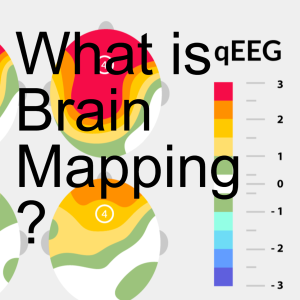
Saturday Apr 22, 2023
🧠🗺️ Mapping: What is Neurostimulation and Neurofeedback?
Saturday Apr 22, 2023
Saturday Apr 22, 2023
#HealingandGrowth #PersonalizedTreatment #NeuralPlasticity
Click here to find out more and book: https://gettherapybirmingham.podbean.... 🧠💡 What You Need to Know About Neurostimulation and Brain Mapping 🌟🔬 Discover the cutting-edge therapy technique known as neurostimulation, designed to unlock new neural connections and rewiring pathways in the brain for growth and healing. Unlike other forms of brain feedback, neurostimulation emulates the natural learning process we experience as children, restoring plasticity and facilitating the formation of fresh neural networks. Whether it's trauma, brain injury, aging, or neurodevelopmental conditions impeding brain growth, neurostimulation offers a natural solution. 🌱💫 Enter the realm of brain mapping, the most precise method for analyzing brain function and personality. Far surpassing the insights gained from therapy or psychometrics alone, brain mapping provides invaluable information. Utilize your brain map to validate your intuitive understanding of your diagnosis, collaborate with your therapist to plan treatment, make informed decisions about medication, and determine the necessary steps for healing and growth. 🧭🧠💭 At Peak Neuroscience, we harness the power of your brain map to create a personalized neurostimulation plan that revitalizes your brain and promotes growth and healing. By identifying areas affected by trauma, injury, mental health conditions, or aging, neurostimulation taps into the brain's innate healing mechanisms. Through direct communication with the brain's neurons, our neurostimulation allows us to guide the healing process, potentially leading to permanent results and reducing or eliminating the need for medication in specific disorders. Gain the tangible proof you seek about your brain's state, as brain mapping provides undeniable evidence of its functioning, unlike many therapists and clinics that fail to listen. 📊🧠💪 Within the intricate web of neural networks, frequencies play a vital role. During learning, these frequencies harmonize, establishing functional connections. However, when interruptions occur, these frequencies break down, hindering effective communication within the brain's channels. At Peak Neuroscience, our clinicians refer to these frequencies as "phases," using them to comprehend your personality and determine the healing your brain requires. Neurostimulation emerges as the sole method of gentle, personalized stimulation that targets your brain's unique neural network. Unlike feedback or stimulation approaches based on a clinician's opinion or external measurements, neurostimulation is grounded in your brain's distinct fingerprint, with every aspect of treatment tailored specifically to you. 🌌🧠🎯 Unlock the transformative power of neurostimulation and brain mapping, unravel the frequencies that shape your brain's communication, and embark on a journey of healing and growth guided by your brain's unique needs and diagnosis. Experience the future of neuroscience at Peak Neuroscience. 💫🌟💆♀️ ⚡️ #NeurostimulationTherapy #BrainMappingInsights #HealingandGrowth 🔬 #PersonalizedTreatment #BrainHealthRevolution #NeuralPlasticity 🌌 #UnlockingPotential #CuttingEdgeNeuroscience #PersonalizedHealing Find more at:
Website: https://gettherapybirmingham.com/Check out the youtube: https://youtube.com/@GetTherapyBirminghamPodcast Website: https://gettherapybirmingham.podbean.com/Podcast Feed: https://feed.podbean.com/GetTherapyBirmingham/feed.xmlTaproot Therapy Collective2025 Shady Crest Drive | Hoover, Alabama 35216Phone: (205) 598-6471Fax: (205) 634-3647 Email: Admin@GetTherapyBirmingham.comThe resources, videos and podcasts on our site and social media are no substitute for mental health treatment. Please find a qualified mental health provider and contact emergency services in your area in the event of an emergency to a provider in your area. Our number and email are only for scheduling at Taproot Therapy Collective are not monitored consistently and not a reliable resource for emergency services.

Saturday Apr 15, 2023
Saturday Apr 15, 2023
Source:https://www.podbean.com/eau/pb-eajkz-...
🌟📚 Meet Win Scheppes: A Lifelong Friend, Mentor, and Dedicated Social Worker at 86! 🤝💼
Discover the inspiring story of Win Scheppes, a remarkable social worker who continues to make a difference in people's lives well into his 86th year. With unwavering passion, he exclaims, "I love doing therapy so damn much," showcasing his unrelenting commitment to his profession. For an incredible 57 years, he has served his community from his Homewood office, touching countless lives along the way. 🌟💙
But Win's journey doesn't end there! Recently, he accomplished a lifelong dream by publishing a heartwarming children's book. This touching work aims to convey an essential message to children: It's okay to cry. Through his book, Win aspires to provide comfort and understanding to young readers, fostering emotional well-being and resilience. Join the local Alabama community in celebrating Win Scheppes as he embarks on a new chapter as an esteemed author. 📖🌈
If you're curious to explore Win's incredible book, check it out here:👉📚 https://www.amazon.com/-/zh_TW/Winsto...
Witness the power of compassion and the indomitable spirit of an extraordinary individual dedicated to making the world a better place, one therapy session and one page at a time. 🌟🌍💕
👴🧡 #WinScheppes #LifelongFriend #InspiringMentor🤝💼 #DedicatedSocialWorker #TherapyPassion #CommunityImpact📚🌈 #ChildrensBook #EmotionalWellBeing #Resilience🌟💙 #AlabamaAuthor #DreamRealized #BookPublication Find more at: Taproot Therapy CollectiveWebsite: https://gettherapybirmingham.com/Address:2025 Shady Crest Dr2nd FloorHoover, AL 35216
Email: Admin@GetTherapyBirmingham.comMaps: https://goo.gl/maps/cnverPNUPuxiPkbc8Podcast: https://gettherapybirmingham.podbean....Phone: (205) 598-6471Fax: 205-634-3647 https://gettherapybirmingham.com
https://www.amazon.com/-/zh_TW/Winston-Schepps/dp/1098302710
Read More at https://gettherapybirmingham.com/blog/
Website: https://gettherapybirmingham.com/Check out the youtube: https://youtube.com/@GetTherapyBirminghamPodcast Website: https://gettherapybirmingham.podbean.com/Podcast Feed: https://feed.podbean.com/GetTherapyBirmingham/feed.xmlTaproot Therapy Collective2025 Shady Crest Drive | Hoover, Alabama 35216Phone: (205) 598-6471Fax: (205) 634-3647 Email: Admin@GetTherapyBirmingham.comThe resources, videos and podcasts on our site and social media are no substitute for mental health treatment. Please find a qualified mental health provider and contact emergency services in your area in the event of an emergency to a provider in your area. Our number and email are only for scheduling at Taproot Therapy Collective are not monitored consistently and not a reliable resource for emergency services.

Monday Mar 06, 2023
🏢👿Corporate Tech Monopolies are Going to Ruin Therapy
Monday Mar 06, 2023
Monday Mar 06, 2023
Read the article here: https://gettherapybirmingham.com/corporate-tech-monopolies-are-going-tto-ruin-therapy/
Last weekend BetterHelp, the online subscription therapy company, settled with the FTC for almost 8 million in fines for selling therapy patients confidential information to Facebook and Snapchat. This isn’t justice, so hold your applause.
The company, whose name really is the word better and help smashed together with no space between them has had issues before. A quick google search reveals customer reviews claiming the company is as good at therapy as it is at punctuation. The company previously faced controversy for allegedly paying youtube influencers to vlog about invented mental health conditions that they claimed the company's treatment had “cured”. Since these influencers have and audience of children and young adults who look up to them, these potential lies are especially worrisome. Some of these influencers purportedly received thousands of dollars in compensation for the alleged lies.
Real patients seeking a cure from better help have reported getting hit with recurring subscription fees, therapists that repeatedly no show and charge you anyway, as well as getting slammed with hours of paperwork that takes up all the allotted time. If true, this is a shady practice but not illegal.
So why is the sale of data such a big deal? Put simply it's a big deal because if I did it to one patient I would lose my license and potentially get sued. The FTC has just set a precedent that big companies can now do this to millions of people with impunity. Fines, like the 7.8 million that BetterHelp is returning to consumers is a cost of doing business for these companies. They take the risk because they make more money breaking the law than they pay in fines.
Because this would have put anyone else in court.
When you go to therapy there is more than just an expectation that what you talk about will be kept private. HIPPA laws mean that if your therapist knowingly discloses information about you they are breaking the law. You can sue them, their board can take their license, insurance panels can drop them and you can sue them civilly. This is if one therapist knowingly shares the data of a single patient.
Here it happened to millions of people. This was not an accident either. BetterHelp intentionally did this WHILE telling customers specifically that they would never do the thing that they were secretly doing.
BetterHelp removed all of the links I posted to these news articles from their social media in an effort to not have to be associated with their own behavior. That is strange since BetterHelp also claims that they did nothing wrong in their statement about the settlement.
“This settlement, which is no admission of wrongdoing, allows us to continue to focus on our mission".
You read that right. Either BetterHelp misspelled “I’m sorry” or they really think they did nothing wrong. Let's hope they are as bad at spelling as punctuation. People with antisocial personality disorder have no regard for right and wrong despite getting caught and experiencing consequences. People with this disorder need therapy but here a possible inference is that they appear to be providing it.
BetterHelp also goes on to say in their statement that all the information sold to Facebook was encrypted and non identifiable despite the fact that they released the emails of users. My email address, JoelBlackstock@GetTherapyBirmingham.com, is pretty effective at letting someone identify who I am.
Betterhelp released emails of users. If they are using betterhelp, they are seeking mental health treatment. They also released information regarding prior mental health treatment. According to the complaint:
Some of the intake questions that BetterHelp sold to facebook identified whether patients had been in therapy before. Below is from the official complaint:
“For example, though an affirmative response to the question “Have you been in counseling or therapy before?” was coded as “AddToWishlist,” the analyst revealed to Facebook that this event meant that the “user completes questionnaire marking they have been in therapy before, thereby disclosing millions of Visitors’ and Users’ prior therapy to Facebook.”
BetterHelp claims this is not protected information because it didn't come from actual sessions, just the intake to an app that gets you therapy. This is absurd. I am not allowed to tell you who comes into my waiting room or who emails me about therapy because it is readily apparent that those people are trying to receive healthcare.
While the legal burden of responsibility lies with the seller, the buyer bears some ethical responsibility in my mind. Facebook and Snapchat knew what the data was they were buying. If you knowingly buy stolen goods you are culpable. If you get caught stealing you get a punishment in addition to having to give back what you stole. Here the FTC has merely made BetterHelp return the ill gotten gains but there are no consequences. There is no punishment that any single other therapist would face.
THEN BetterHelp released a statement saying they didn't do anything wrong. Is that justice?
These corporate monopolies are ruining therapy and it is not talked about enough. The parent company of BetterHelp is another giant monopoly, Teladoc. Even if this gets publicized, even if CNN and Fox News deign to care about potentially criminal invasions of privacy, the parent company can just dissolved the brand and use the same practices under the larger corporate umbrella. This is increasingly worrisome as insurance companies are making moves to make Teladoc the mandatory go between software for patients to receive teletherapy.
As a patient, as a provider, as a legislator, refuse to participate in these things. They are a bad precedent taking the industry into a bad place.
Anyone who wants to say that this is wrong and condemn these practices has to make the intellectual leap that the only way to make it stop is to force these companies to face legal consequences. Not fines. Fines are baked into the cost of doing business. If you say you care about this then you have to accept that the only way to stop these companies is to break them up and send people to prison.
Companies like this can make more money breaking the law than they have to pay back. Executives who signed off on this deserve jail time and these companies need to be taken apart. Let's see how frequently this happens when people start looking at prison time.
Many podcasters pretend to be allies for mental health yet shill for these companies. If you listen to an influencer who shills for BetterHelp it is your responsibility to hold them accountable.
I am not making this post to condemn BetterHelp therapists. I know some who are good people and talented. I do not believe these practices are their fault. Noone becomes a social worker to get rich and finding ethical employment is a luxury that comes secondary to paying your mortgage. Good therapists work there; it drives the better people further away from competitors. Responsibility lies with the people with power not those subject to its whims. Although, you should know if you work for BetterHelp that your contract makes you personally liable for patient outcomes, even outcomes caused by following company policies.
I’ve been careful to limit my own liability in this article and without going through any more specifics, if you are a patient or a provider I am happy to guide you through how to succeed in this industry. The vast majority of people who contact Taproot Therapy Collective receive a high quality personalized referral to another local provider.
We genuinely want you to get therapy at the best place for you. We recognize that we are not the right provider for every need. We treat the therapists in our collective well even though we could make more money if we didn’t. We call every person who contacts us back even when we are full. We don’t do that because it makes us money. We do it because providers of mental health services have a responsibility to ethical behavior even when our legislators have decided there won’t be legal consequences if we don’t.
Choosing ethical behavior is not something that should be up to the clinician. Our legislators should enforce existing laws even if it means sending their campaign donors to jail. We are in a mental health crisis and practices like these give people valid reasons to be afraid of getting mental health care.
Website: https://gettherapybirmingham.com/Check out the youtube: https://youtube.com/@GetTherapyBirminghamPodcast Website: https://gettherapybirmingham.podbean.com/Podcast Feed: https://feed.podbean.com/GetTherapyBirmingham/feed.xmlTaproot Therapy Collective2025 Shady Crest Drive | Hoover, Alabama 35216Phone: (205) 598-6471Fax: (205) 634-3647 Email: Admin@GetTherapyBirmingham.comThe resources, videos and podcasts on our site and social media are no substitute for mental health treatment. Please find a qualified mental health provider and contact emergency services in your area in the event of an emergency to a provider in your area. Our number and email are only for scheduling at Taproot Therapy Collective are not monitored consistently and not a reliable resource for emergency services.
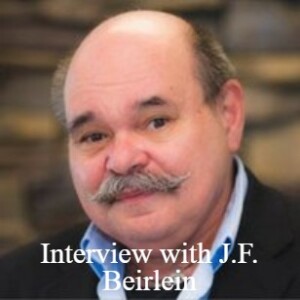
Monday Feb 27, 2023
🐉J.F. Bierlein on Poetry, Myth, and Metaphor -www.gettherapybirmingham.com
Monday Feb 27, 2023
Monday Feb 27, 2023
📚🌍 Dive into the Fascinating World of J.F. Bierlein: Author, Teacher, and Multilingual Scholar 🌟📖 Journey back to my middle school days, where my passion for depth psychology was ignited by the captivating works of J.F. Bierlein. As the brilliant mind behind "Parallel Myths" and "Living Myths," J.F. paved the way for my profound interest in exploring the depths of the human psyche. 📚💫 Beyond his impressive literary achievements, J.F. Bierlein is a distinguished educator at American University in Washington, where he imparts his wisdom in the Washington Semester and World Capitals Program. Alongside his academic endeavors, he contributes his expertise to a social sciences consulting firm, expanding his impact even further. 🎓🌍 A true polymath, J.F. Bierlein's intellectual curiosity extends to various domains. He delves into theology, existentialism, art, opera, and the study of classical Greek, Sanskrit, Hebrew, and numerous other languages. This multilingual scholar's diverse interests reflect his deep appreciation for the humanities and his commitment to exploring the complexities of the human experience. 🌟🌍📚 Step into the realm of myth, poetry, metaphor, psychology, and mysticism through J.F. Bierlein's profound works. Uncover the interconnectedness of ancient myths, the power of symbolism, and the insights into the human condition offered by luminaries like Carl Jung. Let the realms of depth psychology and existentialism captivate your imagination and expand your understanding of the human psyche. 🌌💭 Join the discourse and embark on a transformative journey through the captivating writings of J.F. Bierlein. Immerse yourself in the world of gods, archetypes, and the mysteries that lie within the human soul. 🌟📚🔑 📖💡 #JFBierlein #ParallelMyths #LivingMyths #DepthPsychology 🌍🎓 #MultilingualScholar #Educator #Humanities 🔍🌌 #Mythology #Symbolism #Existentialism #CarlJung 📚🌸 #LiteraryInspiration #Mysticism #Poetry #Metaphor
Website: https://gettherapybirmingham.com/Check out the youtube: https://youtube.com/@GetTherapyBirminghamPodcast Website: https://gettherapybirmingham.podbean.com/Podcast Feed: https://feed.podbean.com/GetTherapyBirmingham/feed.xmlTaproot Therapy Collective2025 Shady Crest Drive | Hoover, Alabama 35216Phone: (205) 598-6471Fax: (205) 634-3647 Email: Admin@GetTherapyBirmingham.comThe resources, videos and podcasts on our site and social media are no substitute for mental health treatment. Please find a qualified mental health provider and contact emergency services in your area in the event of an emergency to a provider in your area. Our number and email are only for scheduling at Taproot Therapy Collective are not monitored consistently and not a reliable resource for emergency services.
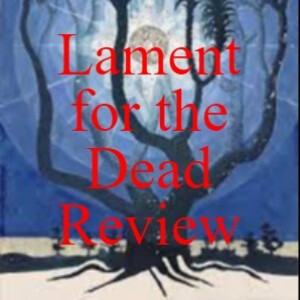
Monday Dec 19, 2022
Monday Dec 19, 2022
📚💡 Exploring the Profound Insights of Carl Jung's "The Red Book" and the Essence of Jungian Psychology 🌌🔑🔮
Delve into the captivating world of Carl Jung's "The Red Book: Liber Novus," where the depths of the human psyche and the realm of the unconscious come to life. Jung considered the years he dedicated to pursuing inner images as the most crucial time of his life, from which everything else flowed. This enigmatic stream from the unconscious flooded him, leading him on a transformative journey of self-discovery and integration. 📖💭
"The Red Book" represents Jung's personal descent into the underworld, akin to the ancient Egyptian practice of opening the mouth of the dead. It is his "Book of the Dead," requiring the sacrifice of blood and the confrontation of unanswered questions from the realm of the deceased. Through this process, Jung realized that coming to terms with the dead is essential for true living, as our lives are intricately entwined with their unresolved queries. 👥🌌
The publication of "The Red Book" in 2009, almost a century after its inception, sparked both intrigue and debate. Although opinions vary on whether Jung would have chosen to publish the book during his lifetime, its significance to the psychologist cannot be understated. Revealed to only a select few confidants and family members, it was a formative period for Jung, exposing him to the depths of the collective unconscious and the forces of the deep mind. This experience profoundly influenced his subsequent work, shaping his theories and concepts concerning the unconscious and the repressed aspects of the human mind. 📚🔮
Jungian psychology, at its core, has two fundamental goals. Firstly, it seeks to integrate and understand the deepest, most repressed aspects of the human mind, paving the way for individuation—the process of becoming aware of and embracing one's true self. Secondly, it aims to navigate this profound exploration without being consumed by the unconscious forces uncovered along the way. It provides a psychological container and lens through which the self can be comprehended and clarified. 💡🔍
While not intended to be a religion, Jungian psychology serves a similar purpose by addressing the functions of the human need for religion, mythology, and the transcendental. It acts as a bridge to religion, encouraging psychology to explore and understand these aspects consciously. Jung hoped that by bringing awareness to the role of religion within humanity, his psychology could help foster a healthier and more mindful relationship with religious and transcendent experiences in our culture. 🌟🌍
Immerse yourself in the rich tapestry of Jungian psychology, where the exploration of the unconscious meets the quest for self-discovery, integration, and understanding. Uncover the transformative power of "The Red Book" and the enduring legacy of Carl Jung's profound insights. 📚🔑💫
🌌📖 #TheRedBook #CarlJung #JungianPsychology💭🔮 #UnconsciousMind #CollectiveUnconscious #Individuation🌟🌍 #Religion #Mythology #Transcendence🔍💡 #SelfDiscovery #Integration #PsychologicalInsights
Source:https://www.podbean.com/eau/pb-q9gf3-132ff80 Website: https://gettherapybirmingham.com/Check out the youtube: https://youtube.com/@GetTherapyBirminghamPodcast Website: https://gettherapybirmingham.podbean.com/Podcast Feed: https://feed.podbean.com/GetTherapyBirmingham/feed.xmlTaproot Therapy Collective2025 Shady Crest Drive | Hoover, Alabama 35216Phone: (205) 598-6471Fax: (205) 634-3647 Email: Admin@GetTherapyBirmingham.comThe resources, videos and podcasts on our site and social media are no substitute for mental health treatment. Please find a qualified mental health provider and contact emergency services in your area in the event of an emergency to a provider in your area. Our number and email are only for scheduling at Taproot Therapy Collective are not monitored consistently and not a reliable resource for emergency services.
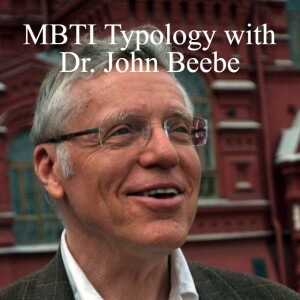
Monday Dec 05, 2022
Monday Dec 05, 2022
Read More at https://gettherapybirmingham.com/blog/
A popular lecturer in the Jungian world, Beebe has spoken on topics related to the theory and practical applications of Analytical psychology to professional and lay audiences throughout the United States and around the world. He has been especially active in introducing training in Jungian psychology in China. Beebe is the founding editor of The San Francisco Jung Institute Library Journal, now called Jung Journal: Culture & Psyche.[2] He was the first American co-editor of the London-based Journal of Analytical Psychology.
Beebe has also published in The Chiron Clinical Series, Fort Da, Harvest, The Inner Edge, Journal of Jungian Theory and Practice, Psychoanalytic Psychology, Psychological Perspectives, The Psychoanalytic Review, Quadrant, Spring, The Journal of Popular Film and Television, Theory and Psychology, and Tikkun among others. He has contributed book chapters to The Anne Rice Reader, The Cambridge Companion to Jung, From Tradition to Innovation, House, Humanizing Evil, Initiation, Jungian Perspectives on Clinical Supervision, New Approaches to Dream Interpretation, Post-Jungians Today, Psyche & City, The Psychology of Mature Spirituality, Same-Sex Love, The Soul of Popular Culture, and Teaching Jung.
With Donald Sandner, Beebe is the author of "Psychopathology and Analysis",[3] an article on Jungian complex theory used in many training programs, and with Thomas Kirsch and Joe Cambray the author of "What Freudians Can Learn from Jung".[4] He is the author of the book Integrity in Depth, a study of the archetype of integrity, and of Energies and Patterns in Psychological Type: The Reservoir of Consciousness.
Website: https://gettherapybirmingham.com/Check out the youtube: https://youtube.com/@GetTherapyBirminghamPodcast Website: https://gettherapybirmingham.podbean.com/Podcast Feed: https://feed.podbean.com/GetTherapyBirmingham/feed.xmlTaproot Therapy Collective2025 Shady Crest Drive | Hoover, Alabama 35216Phone: (205) 598-6471Fax: (205) 634-3647 Email: Admin@GetTherapyBirmingham.comThe resources, videos and podcasts on our site and social media are no substitute for mental health treatment. Please find a qualified mental health provider and contact emergency services in your area in the event of an emergency to a provider in your area. Our number and email are only for scheduling at Taproot Therapy Collective are not monitored consistently and not a reliable resource for emergency services.

Sunday Nov 27, 2022
🏰Interview on Bollingen Tower with Martin Gledhill
Sunday Nov 27, 2022
Sunday Nov 27, 2022
📚💡 Exploring the Profound Insights of Carl Jung's "The Red Book" and the Essence of Jungian Psychology 🌌🔑🔮 Delve into the captivating world of Carl Jung's "The Red Book: Liber Novus," where the depths of the human psyche and the realm of the unconscious come to life. Jung considered the years he dedicated to pursuing inner images as the most crucial time of his life, from which everything else flowed. This enigmatic stream from the unconscious flooded him, leading him on a transformative journey of self-discovery and integration. 📖💭 "The Red Book" represents Jung's personal descent into the underworld, akin to the ancient Egyptian practice of opening the mouth of the dead. It is his "Book of the Dead," requiring the sacrifice of blood and the confrontation of unanswered questions from the realm of the deceased. Through this process, Jung realized that coming to terms with the dead is essential for true living, as our lives are intricately entwined with their unresolved queries. 👥🌌 The publication of "The Red Book" in 2009, almost a century after its inception, sparked both intrigue and debate. Although opinions vary on whether Jung would have chosen to publish the book during his lifetime, its significance to the psychologist cannot be understated. Revealed to only a select few confidants and family members, it was a formative period for Jung, exposing him to the depths of the collective unconscious and the forces of the deep mind. This experience profoundly influenced his subsequent work, shaping his theories and concepts concerning the unconscious and the repressed aspects of the human mind. 📚🔮 Jungian psychology, at its core, has two fundamental goals. Firstly, it seeks to integrate and understand the deepest, most repressed aspects of the human mind, paving the way for individuation—the process of becoming aware of and embracing one's true self. Secondly, it aims to navigate this profound exploration without being consumed by the unconscious forces uncovered along the way. It provides a psychological container and lens through which the self can be comprehended and clarified. 💡🔍 While not intended to be a religion, Jungian psychology serves a similar purpose by addressing the functions of the human need for religion, mythology, and the transcendental. It acts as a bridge to religion, encouraging psychology to explore and understand these aspects consciously. Jung hoped that by bringing awareness to the role of religion within humanity, his psychology could help foster a healthier and more mindful relationship with religious and transcendent experiences in our culture. 🌟🌍 Immerse yourself in the rich tapestry of Jungian psychology, where the exploration of the unconscious meets the quest for self-discovery, integration, and understanding. Uncover the transformative power of "The Red Book" and the enduring legacy of Carl Jung's profound insights. 📚🔑💫 🌌📖 #TheRedBook #CarlJung #JungianPsychology 💭🔮 #UnconsciousMind #CollectiveUnconscious #Individuation 🌟🌍 #Religion #Mythology #Transcendence 🔍💡 #SelfDiscovery #Integration #PsychologicalInsights Source: https://www.podbean.com/eau/pb-q9gf3-132ff80 Find more at:
Website: https://gettherapybirmingham.com/Check out the youtube: https://youtube.com/@GetTherapyBirminghamPodcast Website: https://gettherapybirmingham.podbean.com/Podcast Feed: https://feed.podbean.com/GetTherapyBirmingham/feed.xmlTaproot Therapy Collective2025 Shady Crest Drive | Hoover, Alabama 35216Phone: (205) 598-6471Fax: (205) 634-3647 Email: Admin@GetTherapyBirmingham.comThe resources, videos and podcasts on our site and social media are no substitute for mental health treatment. Please find a qualified mental health provider and contact emergency services in your area in the event of an emergency to a provider in your area. Our number and email are only for scheduling at Taproot Therapy Collective are not monitored consistently and not a reliable resource for emergency services.
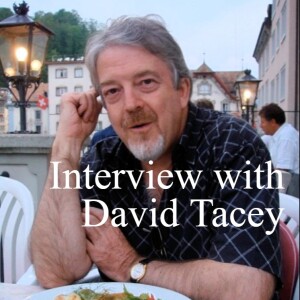
Monday Nov 14, 2022
Monday Nov 14, 2022
*Corrections and clarifications: - David Cronenberg directed A Dangerous Method - James Hillman's book is called A Terrible Love of War Dr. David Tacey: Exploring the Depths of Literature, Depth Psychology, and Spirituality 📚🌌🔍 We are delighted to introduce Dr. David Tacey, a distinguished professor in literature and depth psychology at La Trobe University in Melbourne. With a prolific career spanning eight books, including "Jung and the New Age" (2001), "The Spirituality Revolution" (2003), and "How to Read Jung" (2006), Dr. Tacey has made significant contributions to the field of psychology and spirituality. Born in Melbourne and raised in Alice Springs, central Australia, Dr. Tacey was deeply influenced by Aboriginal cultures, their religions, and cosmologies. This early exposure to indigenous wisdom and spirituality profoundly shaped his worldview. After completing his PhD at the University of Adelaide, he further honed his expertise as a Harkness Fellow in the United States under the guidance of James Hillman, a prominent figure in depth psychology. Dr. Tacey's scholarly pursuits also led him to lecture courses at the summer school of the C.G. Jung Institute in Zurich, further enriching his understanding of Jungian psychology and its applications. For those who have grown up reading David Tacey's works, it is an exciting opportunity to engage with his ideas through this interview. Dr. Tacey's generosity shines through as he offers listeners the chance to request essays from academic journals that may no longer be in print. Simply reach out to him via email, and he will gladly share the requested essays in PDF format. Such accessibility is a testament to his commitment to spreading knowledge and fostering intellectual curiosity. While the resources, videos, and podcasts provided by Taproot Therapy Collective and its social media platforms offer valuable insights, it is important to remember that they do not replace professional mental health treatment. If you require assistance, it is essential to seek support from qualified mental health providers and contact emergency services in your area if necessary. Join the exploration of mysticism, psychology, religion, comparative religion, sociology, anthropology, depth psychology, psychoanalysis, and therapy by delving into Dr. David Tacey's writings and engaging with his fascinating ideas. #Mysticism #Psychology #Religion #ComparativeReligion #Sociology #Anthropology #DepthPsychology #Psychoanalysis #Freud #Psychotherapy #Therapy #Podcast #CarlJung #Mythology
Website: https://gettherapybirmingham.com/Check out the youtube: https://youtube.com/@GetTherapyBirminghamPodcast Website: https://gettherapybirmingham.podbean.com/Podcast Feed: https://feed.podbean.com/GetTherapyBirmingham/feed.xmlTaproot Therapy Collective2025 Shady Crest Drive | Hoover, Alabama 35216Phone: (205) 598-6471Fax: (205) 634-3647 Email: Admin@GetTherapyBirmingham.comThe resources, videos and podcasts on our site and social media are no substitute for mental health treatment. Please find a qualified mental health provider and contact emergency services in your area in the event of an emergency to a provider in your area. Our number and email are only for scheduling at Taproot Therapy Collective are not monitored consistently and not a reliable resource for emergency services.

Tuesday Nov 08, 2022
Tuesday Nov 08, 2022
Andy Savage: A Multifaceted Artist Blending Rock and Visual Art 🎸🎨
Andy Savage is a tremendously talented artist, known for his contributions as the front man of the Parquet Courts, a groundbreaking rock band with seven acclaimed albums. Beyond his musical endeavors, Savage also showcases his artistic prowess through captivating visual art. His paintings exhibit elements reminiscent of Wassily Kandinsky's abstract expressionism, the playful modernism of Paul Klee, and the murals of Emil Bisttram.
In this interview, Savage generously shares insights into his artistic process and how his personality intertwines with his creative endeavors. It offers a unique opportunity to gain a deeper understanding of his artistry and the motivations behind his work.
Be sure to explore Savage's diverse body of work, both in music and visual art, through the following links:
Music: Visit the official Parquet Courts website at https://www.parquet-courts.com/ to dive into their groundbreaking rock compositions and immerse yourself in their distinctive sound.
Visual Art: Discover Savage's beautiful impressionist artwork by visiting his official website at https://a-savage.com/. Delve into his paintings and explore the visual realm where he expresses his artistic vision.
We are incredibly grateful for Savage's contributions to the world of art, both through his music and visual creations. His talent and creativity enrich our cultural landscape, leaving an indelible mark on the realms of rock, indie rock, punk, art rock, and fine art.
#parquetcourts #rock #indierock #musicians #psychology #therapy #psychotherapy #punk #punkrock #artrock #painting #art #artist #guitar #fineart
Website: https://gettherapybirmingham.com/Check out the youtube: https://youtube.com/@GetTherapyBirminghamPodcast Website: https://gettherapybirmingham.podbean.com/Podcast Feed: https://feed.podbean.com/GetTherapyBirmingham/feed.xml
Taproot Therapy Collective2025 Shady Crest Drive | Hoover, Alabama 35216Phone: (205) 598-6471Fax: (205) 634-3647 Email: Admin@GetTherapyBirmingham.com
The resources, videos and podcasts on our site and social media are no substitute for mental health treatment. Please find a qualified mental health provider and contact emergency services in your area in the event of an emergency to a provider in your area. Our number and email are only for scheduling at Taproot Therapy Collective are not monitored consistently and not a reliable resource for emergency services.
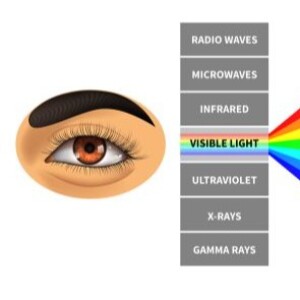
Thursday Oct 27, 2022
👁️🗨️Does Brainspotting work? What to do when Brainspotting doesn’t work?
Thursday Oct 27, 2022
Thursday Oct 27, 2022
Read More at https://gettherapybirmingham.com/blog/
Brainspotting is not a scam! It is an incredibly effective evidence based practice. I try to make videos about the most common phone calls we get at Taproot Therapy Collective. One of the calls that I get is that Brainspotting with a clinician in a another state or country just isn't working. There are thousands of BSP techniques. Patient's call because there clinician is not doing what I do in my videos, and that is fine! One of my favorite things about the BSP approach is that it is so open ended. I think that all of that freedom can be little overwhelming to new BSP clinicians. Especially clinicians coming from EMDR backgrounds. If you are a patient or a clinician having trouble processing with BSP these are some suggestions to help the process along. #Brainspotting #trauma #dualatunement #chaostheory #uncertaintyprinciple #EMDR #tailofthecomet #EMDR #therapy #PTSD #psychotherapy #cptsd #mbti #did
More resources @ https://gettherapybirmingham.com
Website: https://gettherapybirmingham.com/Check out the youtube: https://youtube.com/@GetTherapyBirminghamPodcast Website: https://gettherapybirmingham.podbean.com/Podcast Feed: https://feed.podbean.com/GetTherapyBirmingham/feed.xmlTaproot Therapy Collective2025 Shady Crest Drive | Hoover, Alabama 35216Phone: (205) 598-6471Fax: (205) 634-3647 Email: Admin@GetTherapyBirmingham.comThe resources, videos and podcasts on our site and social media are no substitute for mental health treatment. Please find a qualified mental health provider and contact emergency services in your area in the event of an emergency to a provider in your area. Our number and email are only for scheduling at Taproot Therapy Collective are not monitored consistently and not a reliable resource for emergency services.

Monday Oct 24, 2022
Monday Oct 24, 2022
Stellate Ganglion Block (SGB)—a medical procedure that effectively treats symptoms associated with posttraumatic stress disorder (PTSD)—is an injection of local anesthetic in the neck to temporarily block the cervical sympathetic chain which controls the body’s fight-or-flight response. 💉🚫🏃♀️🏃♂️
SGB has been safely used for over 80 years for many other reasons but was discovered ten years ago to provide relief of PTSD symptoms as well. 🕰️⚕️ Since that time, along with a handful of other physicians, I have pioneered the use of SGB for treating posttraumatic stress within the US Army. 🎖️🇺🇸 Due to its safety, success rate, and rapid onset of relief, SGB has gained wide acceptance in several locations at US military hospitals where it has been available. 🏥🌍
Check out more information about SGB and its applications here: https://www.drjameslynch.com/ 💻🔬
#trauma #ganglion #PTSD #treatment #therapy #cptsd #psychotherapy #neurology #Vasovagal #anxiety #nervoussystem #neuroscienceFind more at: Taproot Therapy Collective
Website: https://gettherapybirmingham.com/Check out the youtube: https://youtube.com/@GetTherapyBirminghamPodcast Website: https://gettherapybirmingham.podbean.com/Podcast Feed: https://feed.podbean.com/GetTherapyBirmingham/feed.xmlTaproot Therapy Collective2025 Shady Crest Drive | Hoover, Alabama 35216Phone: (205) 598-6471Fax: (205) 634-3647 Email: Admin@GetTherapyBirmingham.comThe resources, videos and podcasts on our site and social media are no substitute for mental health treatment. Please find a qualified mental health provider and contact emergency services in your area in the event of an emergency to a provider in your area. Our number and email are only for scheduling at Taproot Therapy Collective are not monitored consistently and not a reliable resource for emergency services.
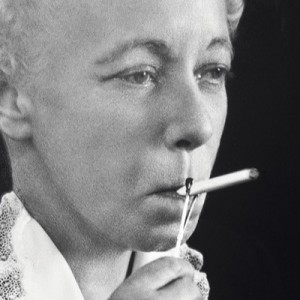
Wednesday Sep 28, 2022
🦲The 3 Personalities of Karen Horney Feminist Psychoanalyst
Wednesday Sep 28, 2022
Wednesday Sep 28, 2022
Read More at https://gettherapybirmingham.com/blog/
Karen Horney was a German psychoanalyst. Her career came into prominence in the nineteentwenties when she formed theories on human attachment and neurosis that split from Freud’skey ideas. Horney’s theory of personality development and individuation are still highly relevantto modern theories of personality, attachment psychology and psychological trauma. Eventhough she is not well remembered, her work is as relevant as it was at the turn of the century.Applying her theories to my work with patients and to my own life has been an integral piece ofmy own personal and professional development. This article is part one of four in a seriesexplaining Horney’s theories.
At the time of this writing my daughter is two. Sometimes when my wife and I relax slightly inpublic, she will get a glimmer in her eye and, starting to giggle, run away from us. While we willyell for her to stop, she will cackle drunk with her new found power, as she runs away into acrowd of strangers or into oncoming traffic. When we take her to school or to meet new peopleshe wraps herself around my wife’s leg, pressing her cheek into my wife’s calf, and refuses toSpeak.
Two year old children cannot understand moderation or limitation. They demand to have “morefood” even when their plate is overflowing. Minutes later they will refuse to eat another bitebecause they are “full”. They cannot understand shades of gray. They refuse to believe thatthey need a nap until their eyes are closing. People are either all “bad guys” or all “good guys”.Individual children live in a world of extremes with tunnel vision on their immediate presentdesires and realities.
Infants do not understand that they are separate creatures from their mother. The firsttraumatic event in an infant’s life is the separation from the mother as the infantbecomes a toddler. Infants are connected to the mother for so much of their post birthexperience. In order to soothe infants we try to make them feel as though they are still in thewomb. We swaddle infants, keep them warm, and play white noise. The mother is both theirsource of physical comfort and nourishment. So much of the infant’s conscious experience iscentered on its connection to its mother, that it makes sense that infants would lack the ability tounderstand what they are outside of the central reality of their experience.
For the nine months in the womb an infant is physically and psychologically dependent on itsmother. It takes at least one and a half years after being born for infants to begin to piecetogether that they will have to eventually become something separate from their mother.Because infants cannot understand their existence without their mother, this means that whenthey are inevitably forced to separate from their mother, infants feel like their existence is underthreat. The necessary task of the mother is to separate the child from herself into itself. Yet, thisfeels to the child like it is being obliterated. This is often the first major trauma of a child’s life.
Karen Horney’s theory of personality and neurosis is built on examining its effect on an infant’sdevelopment. When toddlers begin to be separated from their mothers they experiencemoments where they, like my daughter, think they are God and can run through traffic. They arecompletely independant, completely free, can do things “by themself”, and will never needsupervision or approval from parents again. They quickly alternate into periods of abject terrorwhere they are horrified with their agency as an independent being and, often wrappingthemselves around her leg, attempt to remerge with their mother.
The distinction between infant and toddler is between a creature that can not live independentlyand a creature that sometimes thinks it can. Toddlers alternate between rejecting all authority tobecome a god and trying to crawl back into the womb in order to forget they exist. Our ego iswhat allows us to navigate the overwhelming forces of the unconscious. The ego allows us toaccept both our autonomy and reconcile our own ultimate insignificance. Toddlers are justbeginning to develop an ego that will synthesize these competing, and contradictory realities.As a trauma therapist I use Horney’s theories constantly. The connection between the way thatour parents give us attention and the way we learn to get attention from others in later life isendlessly relevant in many types of therapy, especially work with trauma. In Horney’s theory ofneurosis, the way that a child individuates from their mother determines their coping style andpredicts many of the psychological issues they may develop in later life.
Moving Towards People
Karen Horney was a German psychoanalyst. Her career came into prominence in the nineteentwenties when she formed theories on human attachment and neurosis that split from Freud’skey ideas. Horney’s theory of personality development and individuation are still highly relevantto modern theories of personality, attachment psychology and psychological trauma.Horney observed that children deploy three different coping styles during the time they areindividuating from the mother. Ideally children learn mastery in the three different styles. Inimperfect situations infants become over dependent in one style and form a neurotic and rigidpersonality style. This second part of a four part article will explore the moving towards peoplepersonality style.
The first coping strategy that children will attempt in order to retain the connection with themother during individuation is to ask for help Horney called this stage moving towards people.As infants we cry in order to make our mothers come running to our aid. If our mother’s continueto come running to our aid for the rest of childhood however, this can impair our development aswe fail to learn to solve our own problems internally or assert ourselves. In extreme caseswhere mothers will not separate from a child to allow room for experimentation with assertive
aggression or self soothing behavior the child becomes neurotic and co-dependant in themoving towards people style.People and characters with this level of impairment see the entire world in terms of their motherand never learn to make their own judgements or form their own values. What would motherthink of this? That is against mother’s rules. Another force like a charismatic leader, romanticpartner or social identity may replace the actual mother at some point, but the inability to be aseparate person will remain. Persons over dependent on another person or group’s ego haveno ability to self soothe without the warm glow of the surrogate mother’s approval and ability todefine rules and worth.
Horney calls this neurosis the need for affection and approval. The sense of self in people withthis personality type is incredibly diffuse as they are not able to watch others withdraw theirapproval even for good reason. The psychologist Albert Ellis used to tell his patients that “It ispathological to want to be liked by everybody all the time”. I often tell mine that “There are timeswhen the loving or the honest thing to do is to piss someone off”. When we cannot stand to seeour standards judged by other people it means that we cannot have a stable sense of self withauthentic standards for self worth.
This need often manifests as a form of codependency in relationships or friendships as peopletry to replace the stabilizing presence of a controlling caregiver with a different set of rules andboundaries. We learn to tolerate the anxiety of not knowing what to do and being forced tochoose early in life. When we have not been allowed to adapt to making small choices over thelife course we decompensate in the face of larger overwhelming choices about our life andIdentity.
In therapy I encounter patients who have had a controlling caregiver, and a correspondinginability to develop their own sense of identity. I start by asking them simple questions aboutwho they are. Patients with an underdeveloped sense of personal identity will often have noidea what their basic preferences and beliefs are. Often they will have found an abusive partneror a rigid social, political, or religious group to fill up the “blank” spaces in their identity with. Inhealthy partnerships we are allowed to maintain our own sense of identity while still participatingin a group affiliation or romantic partnership.
I always frame the therapy with these patients as an exciting adventure that we are going ontogether. We are going to discover who the patient is and who they want to become. Patients ofthis coping style often will try and figure out what the therapist wants them to do and what the“new rules” that the therapist has for their life are. Their primary fear is that they will dosomething “wrong” and don't know what the “right” answers are to their life questions. I tellpatients that “You are the only best expert in how to be you”.
While the freedom and gray area of this kind of personality development therapy is initiallyterrifying to patients, eventually this style of therapy becomes exhilarating as patients reconnectto a long absent sense of self. Even though patients present to therapy blank and indifferent about their, often abusive and traumatic history, they will start to recognize moments in the pastwhen they had a strong emotion or a preference that was dismissed by a caregiver or a partner.“I was so angry that my clothes were picked out for me every day”. “I was told that goodchristians don’t go to prom”.
Not all people in the moving towards people neurotic type will use a partner to try andcomplete their functioning. Oftentimes I have patients with social and intellectual gifts that useadmiration, fame or envy in order to move towards people. Many people seek fame or attention,but those with a moving towards people neurosis will not be able to function withoutadmiration of others. These patients are not able to determine the value or morality of theirbehavior without group approval.
Moving Against People
Karen Horney was a German psychoanalyst. Her career came into prominence in the nineteentwenties when she formed theories on human attachment and neurosis that split from Freud’skey ideas. Horney’s theory of personality development and individuation are still highly relevantto modern theories of personality, attachment psychology and psychological trauma. This thirdpart of a four part article will explore the moving against people personality style.
In Horney’s theory of individuation, the individuating child will settle into one of three differentpersonality styles based on what allows it to successfully reclaim its parent’s attention. The first style that children try is the moving towards people style. This is most familiar to the child since this is the style they are accustomed to using in infancy. If this asking for attention and attempting to be close to the mother through affection fail, the child will next try aggression in order to force it’s caregiver to give it what it wants. If only aggression is effective the child willsettle firmly into a moving against people personality style.
People in the moving against people personality style had sporadic or unpredictable affectionoffered to them as children. They came from environments that were hostile or uncaring andhandled the fundamental insecurity that these environments engendered by becomingaggressive. They never had the option of asking for the basic attention children need andinstead learned to demand attention. Caregivers were neglectful and unresponsive until thesefought for the little affection or attention available in their home.
This reality in their family of origin colors these patient’s interpersonal style and assumptionsabout the world. These assumptions about others and the world are immediately recognizable inthe first few minutes of the first therapy session when a patient in the moving against peoplepersonality style presents to therapy. Patients in the moving against people personality style are not likely to come to therapy and do not usually present to therapy until they are in crisis orare facing significant personal or professional losses due to their rigidity.
Just as patients in the moving towards people personality type often have anger turned off,patients in the moving against people personality type are often out of touch with their abilityto feel hurt or vulnerable. To ward this feeling off patients in theis personality style develop a“don’t mess with me” defensive posture. They may use wit as a weapon becoming acerbicallyfunny. They maybe overly macho or simply act like they don’t care what anyone thinks.
Most often patients who are neurotic in the moving against people personality style are highlycompetitive and motivated to dominate athletics, group functions and professional environments. Patients in this style are often high achievers when they are skilled. They areseen as invulnerable at work but often feel hollow in personal spheres. They are unable tounderstand the point of life without comparison and competition. Patients often present totherapy in middle age when there is “nothing else left to win”.
Moving Away From People
Karen Horney was a German psychoanalyst. Her career came into prominence in the nineteentwenties when she formed theories on human attachment and neurosis that split from Freud’skey ideas. Horney’s theory of personality development and individuation are still highly relevantto modern theories of personality, attachment psychology and psychological trauma.
Horney observed that children deploy three different coping styles during the time they areindividuating from the mother. Ideally children learn mastery in the three different styles. Inimperfect situations infants become over dependent in one style and form a neurotic and rigidpersonality style. This second part of a four part article will explore the moving away frompeople personality style.
Horney’s three neurotic personality styles can most simply be understood as dependency (moving towards people), Aggression (moving against people) and resignation (moving away from people). The resigned type is the result of the developing child discovering that they are unable to get the attention of the parent either through asking for attention or demanding it. The child then retreats into an innerworld where it creates its own systems of psychological reward through creativity and self expansion.
If you are a writer or a psychotherapist it is highly likely that you are strongly developed in thisarea even if you are not quite a neurotic! The ability to move into your head and create your ownrules and concepts for life is a useful skill, but not one we learn from asking or demandingattention from our parents. These personality types are more able to see through the arbitrarynature of the rules or traditions in a society, and have less attachment to the cultural rules.
Unless these children develop ways of communicating these inner worlds they can seem“spacey” or “lost in their thoughts”. All of the neuroses that Horeney observes can be understood as the limiting conditions that a person with insecure attachment has for being safe. The dependent type needs others to feel safe, while the aggressive type needs control. A person in the “moving away from people” neurotic type only feels safe when some inner condition of solitude or independance has been fulfilled. This ultimate value of independence can present in several ways. Some want to be invisible, living an unassuming and private life. Sometimes the fixation on independence manifests and living off the land, being wealthy, and sometimes as being emotionally independent. Patients in this style may emulate, Jay Gatsby, Jeremiah Johnson or John Wayne.
The moving away from people’s personality type is not comfortable unless they are absolutelyindependent in some special area. While the moving towards people type needs people in orderto function, and the moving against people personality type needs people in order to becomedominant, the moving away from people type feels unsafe if it needs people for anythingsubstantial. This does not mean that they are unsuccessful socially, only that they areuncomfortable with relying on social or emotional ties to others in order to feel stable. This typefailed to maintain a connection with their mother through either dependence seeking oraggressive behaviors.
They learned to soothe themselves and learned their own coping skills.This process of learning to regulate ones own emotions as a child without assistance leadschildren into their own head where they develop a large and elaborate inner world. Childrenbecome less interested or even aware of external realities like norms, socially, or practicaltasks. Instead of learning to manage their feelings they become fascinated with them.
Moving away from people personality type patients have a unique knack for encoding their beliefs, personality and opinions into artistic creations because they crave the recognition andunderstanding that was denied them by their caregivers as children. Art, humor, fashion,business even, is a way of communicating something about the hidden self to others.
Website: https://gettherapybirmingham.com/Check out the youtube: https://youtube.com/@GetTherapyBirminghamPodcast Website: https://gettherapybirmingham.podbean.com/Podcast Feed: https://feed.podbean.com/GetTherapyBirmingham/feed.xmlTaproot Therapy Collective2025 Shady Crest Drive | Hoover, Alabama 35216Phone: (205) 598-6471Fax: (205) 634-3647 Email: Admin@GetTherapyBirmingham.comThe resources, videos and podcasts on our site and social media are no substitute for mental health treatment. Please find a qualified mental health provider and contact emergency services in your area in the event of an emergency to a provider in your area. Our number and email are only for scheduling at Taproot Therapy Collective are not monitored consistently and not a reliable resource for emergency services.
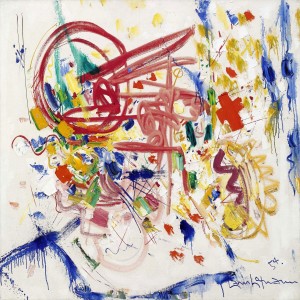
Sunday Sep 25, 2022
👶🖍The Child Archetype 6/6
Sunday Sep 25, 2022
Sunday Sep 25, 2022
Find more free resources on the website: https://www.gettherapybirmingham.com/
The Child is a tricky archetype to find within ourselves. The Child is the first archetype that the self identifies with. The Child has no problem asking for help or expressing it’s emotions and desires loudly and honestly. The Child is a kind of creative anarchy that we lose as adults and rediscover during liminal and transitional spaces in our development. The Child is a freedom we reconnect with when we release the parts of ourselves that have held us back. The Child is the “alive” feeling that addicts begin to connect with after completing recovery. The Child is strongly associated with the unconscious and a sense of connectedness to all things. Children are still discovering the things that make them unique individuals. The Child is growth and Children know how to grow instinctively.
The Child does not remember all of the rules that we had to learn as adults and is more interested in its own creative impulses and whims than rules or deadlines. The Child is necessary for art and for self discovery, but it can become solipsistic when it is over indulged. The Child puts us in touch with vulnerability but it cares about its own emotions, desires and whims. It is not aware of others or their wants or needs. The Child is important to creatives because it is the source of new ideas and perspectives but it needs to be tempered lest we become selfish, oblivious and inwardly focused.
In adulthood is the process of losing touch with the vulnerability and capacity for growth that we felt as children. Adults come to believe that the limiting voice of their inner critic is “responsible” and that asking for help or admitting vulnerability is “weak”. Many times the process of therapy forces us to uncover our own vulnerable child and reconnect with the parts of ourselves that are hurting or scared. When we cannot honestly admit our own needs, fears and sadness we often over complicate our life.
Patients who are over identified with the Child may present to therapy lost in creative visions and emotional whims. While over identified with the Child, these patients will be oblivious or in denial about the practical and detail oriented responsibilities of adult life. They may be prone to bouts of drug use or personal vision quests and passion projects. Patients will often overly identify with the Child as a response to their families of origin having pathological Queen archetypes that stifled development. In college or as adults they cast aside all responsibilities and overcompensate for the constraints of their childhood with an overly juvenile outlook on responsibility.
Patients under identified with their Child will present to therapy asking the therapist to produce pragmatic and concrete changes in their lives and relationships. They often come from families led by an over identified King or Warrior that had no interest in the uncertainty or self discovery of the Child archetype. They are rote and uninterested in the abstractions of therapy, art, or life. These patients have little interest in getting in touch with the vulnerabilities or flights of fancy of the Child.
We are all born into the world as a vulnerable Child, as naïve beings that see the world as an unending canvas on which to paint our vision for ourselves. These tendencies are idealistic, but also natural. Material realities impose restrictions on our lives, and we are remiss to ignore them, but also waste the potential meaning in our lives if we become their slaves. Rediscovering the child is necessary for personal growth and healing required to make progress in therapy. The Child is not only creativity and growth, but also our innate resilience. Patients who rediscover the Child during a chronic illness may make recoveries whereas patients who do not may not.
Website: https://gettherapybirmingham.com/Check out the youtube: https://youtube.com/@GetTherapyBirminghamPodcast Website: https://gettherapybirmingham.podbean.com/Podcast Feed: https://feed.podbean.com/GetTherapyBirmingham/feed.xmlTaproot Therapy Collective2025 Shady Crest Drive | Hoover, Alabama 35216Phone: (205) 598-6471Fax: (205) 634-3647 Email: Admin@GetTherapyBirmingham.comThe resources, videos and podcasts on our site and social media are no substitute for mental health treatment. Please find a qualified mental health provider and contact emergency services in your area in the event of an emergency to a provider in your area. Our number and email are only for scheduling at Taproot Therapy Collective are not monitored consistently and not a reliable resource for emergency services.

Friday Sep 23, 2022
💖The Lover Archetype 5/6
Friday Sep 23, 2022
Friday Sep 23, 2022
Find more free resources on the website: https://www.gettherapybirmingham.com/
The Lover is one of the most difficult archetypes to notice that you are experiencing. By its very nature it is seductive and spontaneous. The Lover is most commonly associated with sex, but sex is the smallest part of the archetype. You cannot experience the Lover by yourself, but you do not necessarily have to experience it with another person. Anytime you are pulled into an alluring daydream, swept up in the rhetoric of a rousing speech, or moved to a sense of greater understanding by a work of art or fiction, you are beginning to fall into the embrace of the Lover. The Lover is a drum circle, it is staring deeply into a bonfire, it is a poem about time, a drug trip. The Lover can be an infinite amount of things.
The Lover is most easily understood as our ability to give up a small part of ourselves to become part of something greater. The Lover is our ability to merge with another person or a group of people. The Lover lets us dissolve part of our own ego to be a part of a greater purpose or force of society. If we do not have access to the Lover we are completely alone, completely with purpose and life becomes an abstraction. We are connection making creatures and it is the Lover archetype that allows us to make those connections.
Because The Lover requires us to give up a piece of ourselves in order to identify with it, over identification with The Lover can be disastrous. Patients over identified with The Lover might try to dissolve themselves passionately into each many new relationships or over identify with each new friend. Extreme over identification with The Lover leaves patients with no sense of self. These patients will operate in society as chameleons. Over identification with the Lover is over identification with something outside of oneself. They will continue to find religious, romantic, or social relationships that let them take on someone else’s identity and concept of self.
When working with patients with substance abuse problems therapists should be very aware of the functioning of the lover archetype. Addiction is often understood by therapists as an attempt to numb out painful emotions or memories, and while this interpretation is correct it is also an incomplete understanding of what addiction is. Substance abuse is always fueled by a desperate attempt to have connection with something. The loneliness and isolation that patients with substance abuse issues feel is an extreme under identification with the lover archetype and the hunger for the wholeness of the lover is often the emotional state sought by the addicted person.
I always tell my patients that an addiction is often a hunger for growth with a simultaneous refusal to change. Substance abuse provides the feeling of growth and connection without the actual work or risk. Drugs like alcohol and stimulants often activate the Lover by making us feel productive, creative, loved or accepted. Drugs like depressants or psychedelics often activate the Lover by allowing us to turn off our conscious mind and remerge with the world. Psychedelics and transcendental religious practices often allow a person to experience ego death or a “oneness” with all things. This form of ultimate connectedness is the most activated state of the archetype as we have completely given up our own identity.
The Lover requires us to have the ability to trust something outside of ourselves and may be difficult for patients with trauma to experience without anxiety. We first learn how safe it is to open up to others within our family of origin. Patients that have a strong under identification with The Lover often never felt safe in their families of origin. Patients over identified with the Lover might have had a parent over identified with their Queen and are used to finding a controlling partner. If someone has made us a puppet then we involuntarily find a puppeteer when we leave our families of origin. These patients often become codependent in relationships, looking for someone to give their life rules and meaning. They believe they are unable to do this for themselves.
The Lover is an often ignored archetype, but is needed to give the other archetypes any ability to operate. What is the cause that the Warrior fights for, where is the growth or the creativity of the Child without The Lover? For that matter, what is the grand vision of a King or control of the Queen without the ability to make a connection? For a patient to participate in a relationship with a therapist there must be some part of the Lover archetype active. Therapy requires trust and a dissolution of boundaries enough for the therapist and patient to collaborate on treatment. We cannot begin to benefit in therapy unless we give up some part of our old self and are willing to be open to creating a new self image. Resistance to the therapy process can also be understood as a resistance to experience this archetype
Website: https://gettherapybirmingham.com/Check out the youtube: https://youtube.com/@GetTherapyBirminghamPodcast Website: https://gettherapybirmingham.podbean.com/Podcast Feed: https://feed.podbean.com/GetTherapyBirmingham/feed.xmlTaproot Therapy Collective2025 Shady Crest Drive | Hoover, Alabama 35216Phone: (205) 598-6471Fax: (205) 634-3647 Email: Admin@GetTherapyBirmingham.comThe resources, videos and podcasts on our site and social media are no substitute for mental health treatment. Please find a qualified mental health provider and contact emergency services in your area in the event of an emergency to a provider in your area. Our number and email are only for scheduling at Taproot Therapy Collective are not monitored consistently and not a reliable resource for emergency services.
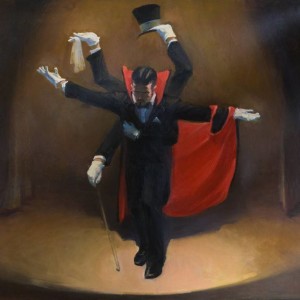
Wednesday Sep 21, 2022
The Magician Archetype 4/6
Wednesday Sep 21, 2022
Wednesday Sep 21, 2022
Find more free resources on the website: https://www.gettherapybirmingham.com/
The Magician is intuition, education, and reflexes. In myth and legend the Magician appears in stories not to be the hero, but to aid the hero on their quest. In these stories the Magician can also take the form of a witch, enchanter, or shaman. The Magician is the most esoteric part of our schooling that filled us with the most passion. The Magician is a sense of personal power and accomplishment, but not power gained through conflict like the Warrior. Power for the Magician comes through cleverness, tricks and being resourceful and inventive.
To the Warrior knowledge, secrets and intrigue make one strong, not brute strength. The Magician is a wiseman and a diviner, both prescient and empathic. The magician can act as a negotiator or statesman, but is more commonly a salesman, seducer, or an entertainer. The Magician stands with one foot in two worlds. He is a gatekeeper between the abstract clairvoyant realm of the unconscious and the practical and results oriented world of the everyday. He brings back visions from the world of the unconscious and bestows them as gifts on others. This power to surprise and interest others is closely tied to our own need for attention. Patients that did not get the attention they desired as children will often have a well developed Magician. These patients believed as children that something about them was bad or shameful, and developed their magician archetype as a way of being seen or having control.
It is the Magician that impresses others with insights, funny stories and hidden talents. It is the Magician that is able to stand out in a bar room or business meeting when others are vying for attention. The Magician is our ingenuity, and adaptability in the face of situations that we cannot plan for or control. The Magician is our ability to read between the lines in academic domains, to see the broader point or meaning beyond a text. Every insight or inspiration that you have ever pulled from the ether and used to your advantage feels like magic. If you are comfortable pulling clever observations and realizations from the unconscious and putting them to use then you are strongly identified with the Magician.
Patients may be under identified with their Magician if they were brought up to be rule oriented or understand the world only as a series of lists to be memorized. These patients are not intuitive but learn by memorizing a series of steps that became a crutch for their thinking. Patients under identified with their own Magician will distrust the Magician in others. They are not adaptable and are inflexible in their thinking. Patients who view people that are funny or creative with suspicion are likely to be under identified with their own Magician.
Patients who are over identified with the Magician may have a grandiose idea of what their intellect or insight will get them out. They may think genius will solve every problem without elbow grease. They may try to use a charming personality or a quick wit to escape hard work or interpersonal conflict. Patients who are deeply dismayed over poor academic performance despite no effort at study will be over identified with the Magician. These patients are often under identified with their Warrior because they have never learned to overcome situations their intuition cannot control or to work hard for a reward.
The fundamental anxiety that the magician assuages is the inability to control one’s surroundings. The Magician is at its root a personality device developed to maintain control during a period in a person’s life when assertiveness was not allowed.
This was often a way to hold on to some control of our environment when direct confrontation was not an option. The Magician can also develop in early childhood when a child feels like there is a need in the family of origin that neither caregiver can meet. This is often a wounded or unreliable caregiver the child has to manage. This leads to the development of an often “magical” seeming ability to read others, read between the lines, and communicate in indirect ways like art and humor.
A patient who is over identified with both the Warrior and the Magician may try to dominate others with their intellect, delighting in the humiliation they cause. After all the cynic is the shadow of the caregiver. A caregiver sees the needs of others in order to meet them. The cynic sees the same needs in others, but uses them to exploit or write off other people. This cynic is the shadow side of the magician’s ability to use intuition to understand others. An example in pop culture would be the stand up comic that summarizes and denigrates groups of people with acerbic insight.
Find more at: Taproot Therapy Collective
Website: https://gettherapybirmingham.com/Check out the youtube: https://youtube.com/@GetTherapyBirminghamPodcast Website: https://gettherapybirmingham.podbean.com/Podcast Feed: https://feed.podbean.com/GetTherapyBirmingham/feed.xml
Taproot Therapy Collective2025 Shady Crest Drive | Hoover, Alabama 35216Phone: (205) 598-6471Fax: (205) 634-3647 Email: Admin@GetTherapyBirmingham.com
The resources, videos and podcasts on our site and social media are no substitute for mental health treatment. Please find a qualified mental health provider and contact emergency services in your area in the event of an emergency to a provider in your area. Our number and email are only for scheduling at Taproot Therapy Collective are not monitored consistently and not a reliable resource for emergency services.
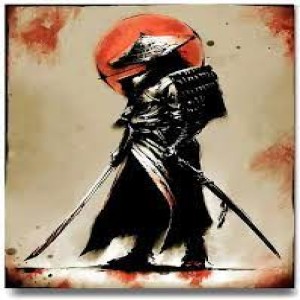
Tuesday Sep 20, 2022
⚔️The Warrior Archetype 3/6
Tuesday Sep 20, 2022
Tuesday Sep 20, 2022
Find more free resources on the website: https://www.gettherapybirmingham.com/
The Warrior archetype allows us to harness our own sense of personal power to face fear and assert our own energy against the plans of others and the plans of the universe. The Warrior allows us to enforce boundaries securely between ourselves and others. It lets us carve out our own sense of personal space and make clear to others what is allowed and what is not. Mankind has had a warrior class as long as there has been civilization. We must all at some point in life learn to face our fears and accomplish something scary. The psychologist Albert Ellis was fond of saying that it was “pathological to want to be liked by everyone all the time”. He knew wisely that we must all learn to face conflict and navigate disagreements with others to remain true to ourselves and our journey.
The Warrior is our actualized capacity for self-expansion, personality development and discovery. We cannot discover who we are meant to be unless we are brave enough to face the unknown and know we deserve to grow. The Warrior is our capability to develop and use our talents for personal and professional achievement, but the Warrior does not exercise leadership or hold authority. The Warrior is not power within systems, only our sense of personal power and competency. The Warrior is our own success within a system of many other Warriors. The Warrior is our own unique abilities harnessed to make ourselves succeed.
Each of the archetypes deals with some form of fundamental anxiety, and the anxiety that the warrior assuages is meaninglessness in the face of chaos. The enemy of the warrior is chaos. When chaos surrounds us we feel like we are not special, like there is no plan, like we do not matter. The Warrior allows us to impose our will into the void and create meaning from scratch. When we feel like life has no purpose, it is our Warrior energy that lets us create purpose. While this function of the Warrior is not a bad thing when it becomes overindulged it becomes the shadow function of tribalism.
While the Warrior lets us strike back at chaos when it threatens our meaning and significance it can also lead us to turn on other people who are not like us.
The over-identified Warrior sees other people as chaos when they act contra its own plans and meaning. Shadow political and religious leaders often call us to over-identify with the Warrior when they tell us to defend our own tribe against attacks from those who are different and would take away what is ours. The Warrior is what allows us to reclaim our purpose and significance when the world threatens to take these things away from us but when overindulged it robs others of these things.
Patients who are under-identified with the Warrior will feel listless, purposeless, and incapable. These patients will often have had their Warrior taken away in an abusive relationship or in their families of origin where they were not allowed to assert themselves. Often they will present to therapy with a general sense of anxiety, believing they lack the power to be assertive, enforce boundaries or change their current reality when it distresses them. Losing touch with the Warrior leads a person to be fearful and conflict avoidant yet be prone to bouts of rage. Without the Warrior we can not act on our anger and do not notice it until it takes us over.
Over identification with the Warrior means that we see every interaction as a challenge, every challenge a fight with a winner and a loser. When the only tool you have is a hammer, every problem is a nail; the old saying goes. If you are over-identified as a Warrior, you will not be able to back down from any confrontation. A diplomacy is never an option to the Warrior. The Warrior is not an archetype that is comfortable accepting humility or the mystery. The warrior is only comfortable with certainty, but as adults, we must learn to be comfortable with the mystery of life. An over-identified warrior archetype might benefit the occasional type-a personality in the business world but most often at the expense of personality development, healthy relationships, and a well-rounded existence.
The Warrior is the mask that we wear when we want to see ourselves as the hero. Patients under-identified with the Warrior may have lost the ability to see themselves as the hero, where patients over-identified with the Warrior may not be able to take off the mask of the hero they aspire to be. The Warrior archetype requires that life and development has taught us to have faith in ourselves and a self-image that allows us to achieve our dreams. Many patients with damage in childhood do not know that they have a right to their own hero’s journey or deserve self-discovery. Oftentimes therapy with traumatized patients will require a therapist to teach patients how to put on the warrior mask.
Under Identification with the Warrior is a disowning of one’s powerful self and ability to act heroically or make meaning. The warrior is at its base an ability to make meaning out of life. If we have disowned the warrior we either see life as meaningless or rely on others to make it for us as followers. Oftentimes patients who have learned that anger is not allowed will try and disown the warrior and “play zen” to avoid the anxiety that conflict causes for them. These patients will often act as though conflict is beneath them when in truth judging or disagreeing with others terrifies them.
Get more articles and free self help resources @ https://www.GetTherapyBirmingham.comGoogle Maps: https://g.page/GetTherapyBirmingham?share
Website: https://gettherapybirmingham.com/Check out the youtube: https://youtube.com/@GetTherapyBirminghamPodcast Website: https://gettherapybirmingham.podbean.com/Podcast Feed: https://feed.podbean.com/GetTherapyBirmingham/feed.xml
Taproot Therapy Collective2025 Shady Crest Drive | Hoover, Alabama 35216Phone: (205) 598-6471Fax: (205) 634-3647 Email: Admin@GetTherapyBirmingham.com
The resources, videos and podcasts on our site and social media are no substitute for mental health treatment. Please find a qualified mental health provider and contact emergency services in your area in the event of an emergency to a provider in your area. Our number and email are only for scheduling at Taproot Therapy Collective are not monitored consistently and not a reliable resource for emergency services.
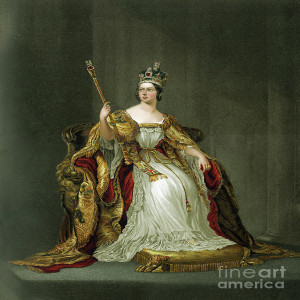
Monday Sep 19, 2022
👸The Queen Archetype 2/6👑
Monday Sep 19, 2022
Monday Sep 19, 2022
Find more free resources on the website: https://www.gettherapybirmingham.com/
The Queen is the power behind power and the maternal influence on development. The Queen is the indirect power that we hold over authority and systems just as the magician is the indirect power we hold over peers and our immediate vicinity. She is every calculated comment that ever made you reconsider your own behavior. She is every raised eyebrow that made you behave. The Queen is long talks by the fire with a loved one about your own worst impulses. She is tempering to power, but when over identified with she becomes a manipulative puppet master behind the throne, a Bloody Mary.
The Queen uses her influence over the powerful to exercise her own power. If this concept is lost on you, then you are likely under identified with your own Queen. If this is the case, be careful, because it is the patients under identified with their own Queen who are most susceptible to be influenced by the Queen of others. If we do not understand the art of manipulation, we have no defenses against it. The Queen is, by her very nature, the least recognized archetype. The Queen is the thing behind the thing. She is the unnoticed influence on the world. The Queen is the reason that the people in charge behave better than they otherwise would.
The Queen is a mothering impulse in all of us. She sits close to our Anima or archetype of the feminine. The Queen is the part of us that wants to see the people around us grow and flourish under our watchful gaze. The Queen smiles as her children and her husband mistake her subtle suggestions for their own ideas. She is the master of the understated and implied. The Queen is consigliere, advisor, right hand man, and second in command.
The fundamental insecurity behind the Queen is the fear that power is incompetent or malevolent. Patients with an over developed Queen usually had a competitive parent or a parent that viewed them as a peer in childhood. Like patients with an overdeveloped Magician, the child with an overdeveloped Queen may have worn this anxiety like a badge of honor in childhood. However, also like the child with an over developed Magician this damaged the child, leaving them hyper vigilant and trapped with an exhausting control instinct. Unlike patients with an over developed Magician, patients with an overdeveloped Queen felt responsible for running a household by proxy and controlling an irascible or inconsistent parent. They did not seek to be understood or get attention from a caregiver like children with an overidentified Magician.
Patients that present to therapy reporting that they are the “therapist for all their friends” or that “everyone asks them for advice” have a healthy identification with their Queen. The over identified Queen is not content to advise power, but wants to control it from the shadows as a puppeteer. Overidentification with the Queen leads patients to become obsessed with subtly influencing other people as extensions of themselves and power. Manipulative patients, who begin to hold their altruism over the heads of those they are helping are on the road to over identification with the Queen. Therapists should be aware of the functioning of this archetype, as it is the role of the therapist to play The Queen in the patient’s life during the process of therapy.
The over identified Queen as a mother does not want children to develop as individuals outside of the family or have a personal identity. Children are to remain a part of her and only exist as her accessory and a reflection of her purposes and her values. The over identified Queen wants to know all her children’s secrets, and to get to tell them exactly who they should become. Because patients who had a mother over identified with her own Queen never had the chance to listen to their own inner voice during development they will present to therapy with a bothersome inner critic that reflects the internalized critical voice of the parent. This overwhelming voice of inner criticism is the implanted voice of the parent that did not want their Child to exist outside their own sphere.
Find more at: Taproot Therapy Collective
Website: https://gettherapybirmingham.com/
Website: https://gettherapybirmingham.com/Check out the youtube: https://youtube.com/@GetTherapyBirminghamPodcast Website: https://gettherapybirmingham.podbean.com/Podcast Feed: https://feed.podbean.com/GetTherapyBirmingham/feed.xml
Taproot Therapy Collective2025 Shady Crest Drive | Hoover, Alabama 35216Phone: (205) 598-6471Fax: (205) 634-3647 Email: Admin@GetTherapyBirmingham.com
The resources, videos and podcasts on our site and social media are no substitute for mental health treatment. Please find a qualified mental health provider and contact emergency services in your area in the event of an emergency to a provider in your area. Our number and email are only for scheduling at Taproot Therapy Collective are not monitored consistently and not a reliable resource for emergency services.
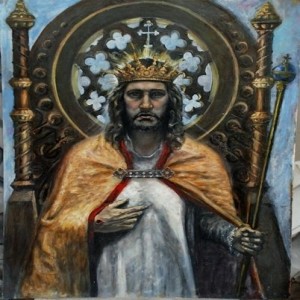
Sunday Sep 18, 2022
🤴The King Archetype 1/6👑
Sunday Sep 18, 2022
Sunday Sep 18, 2022
Find more free resources on the website: https://www.gettherapybirmingham.com/
The King is our sense of systemic power or our sense of power within society . The King is both the father of the family and of society. He has a larger plan for others and sees how all pieces of the system work and what different types of people need. This larger plan comes from creativity and imagination, but it is the practical imagination of planning and developing communities and systems. The King not only wants to improve himself, but to improve others linked to him as an extension of himself. The appropriately identified King is a proud father.
We need the King in order to manage our households, supervise employees, or volunteer in leadership roles. The fundamental anxiety the King manages is the fear that there is no larger plan structuring others lives. The King fears anarchy. The King lets us take the reins and provide leadership when we see that no one else can. The King is able to organize the many individual Warriors behind a single banner. The King is order, organization and unity.
It is healthy and positive to have a vision for a better world that we would like to see our life and works contribute toward. Without the King we cannot have hope for our families or for the world. Patients who were raised being systematically excluded or oppressed are likely to be under identified with their King. If society has rejected or oppressed them their entire lives they have been taught that it doesn’t want them, and will have difficulty believing others will let them lead. If we do not believe we have any power over the world, it is difficult to function within it. These patients will be plagued with interpersonal difficulty until the under identification is resolved.
Patients under identified with their King will avoid any position where they have responsibility for or power over others. They were often punished for being angry or assertive in their families of origin and felt they were not allowed to hold power. Often these patients will have anger “turned off” and have extreme anxiety when circumstances force them to judge others, even accurately, or when they are angry. These patients will have difficulty reconciling anxiety when they have a moral standard that others violate. They do not want to let go of their own moral compass but also are uncomfortable when others fail at being moral or good by their own standard.
Patients who are under identified with their King may be highly competent and successful, but still remain highly individual and atomized, clinging to solely personal power or adhere to strict moral standards they refuse to apply to others. . They may express hopelessness or even contempt for ideas relating to improving family or government systems, even though they could otherwise be highly successful in either.
Patients over identified with their King will mistrust and criticize all authority because it is not their own. They will play contrarian during any discussion of politics or religion and often family issues. They will often get into conflicts with superiors at work but secretly feel unheard or misunderstood. During these times they are reliving their experiences in their own families of origin. Extreme identification with the King will leave patients listless and unsatisfied no matter how much power they attain. Extreme over identification with the King means that there is no amount of power that will ever make one feel fulfilled. Life becomes a competition. It does not become a competition with individuals like the warrior, but a competition with all “great” men from history. Total overidentification makes one want to hold power and influence over others in every domain of life.
Patients over identified with their King will rarely present for therapy of their own volition. These patients can become tyrants to their friends, families and colleagues. Even though these patients may do things that society would consider immoral they will never see themselves as evil. These patients see themselves as saviors that want to save an unappreciative society or family by making them great. Patients who are under identified with their Magician and Warrior often over identify with their King in order to compensate for their failure to develop their own domain of internal (intuition) or external (accomplishment )personal power. These patients often are prone to fantasies about what would happen if they were in charge. They will never see themselves as immoral, but only as misunderstood heroes.
Website: https://gettherapybirmingham.com/Check out the youtube: https://youtube.com/@GetTherapyBirminghamPodcast Website: https://gettherapybirmingham.podbean.com/Podcast Feed: https://feed.podbean.com/GetTherapyBirmingham/feed.xml
Taproot Therapy Collective2025 Shady Crest Drive | Hoover, Alabama 35216Phone: (205) 598-6471Fax: (205) 634-3647 Email: Admin@GetTherapyBirmingham.com
The resources, videos and podcasts on our site and social media are no substitute for mental health treatment. Please find a qualified mental health provider and contact emergency services in your area in the event of an emergency to a provider in your area. Our number and email are only for scheduling at Taproot Therapy Collective are not monitored consistently and not a reliable resource for emergency services.

Thursday Sep 08, 2022
☄️Astrophobia: Why are so many trauma patients afraid of space?🌌
Thursday Sep 08, 2022
Thursday Sep 08, 2022
Find more free resources on the website: https://www.gettherapybirmingham.com/
Our phobias are often metaphors for our most unconscious parts of self. In the 2013 movie Gravity, Sandra Bullock plays an astronaut marooned in space. At every moment she is seconds from spinning into the hopeless oblivion of deep space. Bullock’s character must use her ingenuity to navigate the shuttles and space stations to find her way back to earth. During her time in space Bullock is haunted by trauma from her past. Numerous shots suggest that her time in space causes her to regress to infancy and face not only trauma but primal childhood fear.
It’s fairly common for patients with insecure or reactive attachment to have had an intense fear of darkness as children. Some of them still have a fear of the dark as adults. Darkness takes away the control and awareness that our eyesight provides us. Children who learn that mystery and uncertainty are not safe spaces come to fear the dark. It takes secure attachment to learn that we can go into the great unknown and survive its surprises.
I work primarily as a trauma therapist and a surprising large number of trauma patients have a fear of outer space. So many that I have started to ask if patients have a fear of outer space when certain things come up in therapy. Patients are shocked that I am able to detect such a specific and seemingly bizarre phobia.
Why outer space? We might encounter spiders, or snakes in our everyday routine but outer space is something few people have a direct encounter with. Why do our primal fears manifest as a fear of space?
At a surface level it might not seem to make sense. However space is an extended metaphor for many of our most basic fears. For one space is dark. It is cold. It is inhospitable to us. People that feel unwelcome or incapable can project this inadequacy on the impossibility of surviving in space.
On another level space represents a complete lack of control and orientation. There is no up or down. Every direction leads to the same hopeless void. There is no gravity. There is no ability to center ourselves. These extreme conditions manifest the lack of our most basic needs for orientation control and power.
Most mythological systems begin with a primal void. Water is added to the void and then land. This archetype appears in almost every creation myth. Space represents a reality stripped of the basic elements we need to survive.
Space threatens the importance of all the things our ego needs to maintain integrity. Space represents the ultimate existential threat to all of the projects we create and all the things we identify ourselves with to make meaning. The most ambitious human projects mean nothing from the window of a rocket. Even the great wall of china is a thin line. The Vatican is a tiny dot. Our families, our careers, our religions, our sports teams… all of these things fail to matter in the midst of the cosmos. Space represents the ultimate existential annihilation. It reminds us of our ultimate limitations against the enormous scale of the universe.
When starting trauma therapy we must find our worst fear in order to confront and overcome it. Many times imagining space is the best place to start because it encompasses so many of our fears. What does space make you think of? What parts of it frighten you?
#space #astrophobia #astrology #trauma #ptsd #therapy #psychology #growth #psychotherapy
Website: https://gettherapybirmingham.com/Check out the youtube: https://youtube.com/@GetTherapyBirminghamPodcast Website: https://gettherapybirmingham.podbean.com/Podcast Feed: https://feed.podbean.com/GetTherapyBirmingham/feed.xmlTaproot Therapy Collective2025 Shady Crest Drive | Hoover, Alabama 35216Phone: (205) 598-6471Fax: (205) 634-3647 Email: Admin@GetTherapyBirmingham.comThe resources, videos and podcasts on our site and social media are no substitute for mental health treatment. Please find a qualified mental health provider and contact emergency services in your area in the event of an emergency to a provider in your area. Our number and email are only for scheduling at Taproot Therapy Collective are not monitored consistently and not a reliable resource for emergency services.
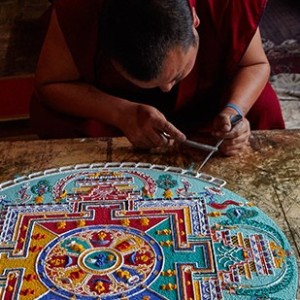
Monday Sep 05, 2022
🌠Existentialism vs Mysticism: What is the Ego Self Axis?
Monday Sep 05, 2022
Monday Sep 05, 2022
To subscribe to the thought-provoking podcast episode, click here: 🎧🌟 #Astrophobia: Why Are So Many Trauma Patients Afraid of Space? Podcast Link: https://GetTherapyBirmingham.podbean.com/e/astrophobia-why-are-so-many-trauma-patients-afraid-of-space/ For additional free resources, explore the website: 📚🔍 #FreeResources Website: https://www.gettherapybirmingham.com/ Dive into the enlightening article on the intersection of therapy, spirituality, and mysticism: 🌌🧠 #TherapySpiritualityMysticism Read the full article that explores the commonalities between major religions, their relation to psychotherapy and mental health, and the potential reconciliation of neuroscience and spirituality: 📖🙏 #ReligionAndMentalHealth Article Link: https://www.gettherapybirmingham.com/post/therapy-spirituality-and-mysticism Delve into the alignment of trauma therapy, Jungian psychology, and depth psychology practices like Brainspotting, EMDR, somatic therapy, and internal family systems therapy: 🔍🌊 #TraumaTherapyAndJungianPsychology Discover how these therapeutic modalities can help us explore the depths of our personality and psychology: 🕳️🔮 #DepthPsychology Taproot Therapy Collective: Website: https://gettherapybirmingham.com/ Address: 2025 Shady Crest Dr Suite 203 Hoover, AL 35216 Email: Admin@GetTherapyBirmingham.com Maps: https://goo.gl/maps/cnverPNUPuxiPkbc8 Podcast: https://gettherapybirmingham.podbean.com/ Phone: (205) 598-6471 Fax: 205-634-3647 Note: The resources, videos, and podcasts provided on the site and social media platforms are not a substitute for mental health treatment. If you require assistance, please seek a qualified mental health provider or contact emergency services in your area during emergencies. The provided contact information is solely for scheduling at Taproot Therapy Collective and is not monitored consistently or intended for emergency purposes. #spirituality #therapy #mysticism #psychadelic #asmr #mentalhealth #psychotherapy #IFS #growth #jung #Brainspotting #depthpsychology #mystic #EMDR #yoga
Website: https://gettherapybirmingham.com/Check out the youtube: https://youtube.com/@GetTherapyBirminghamPodcast Website: https://gettherapybirmingham.podbean.com/Podcast Feed: https://feed.podbean.com/GetTherapyBirmingham/feed.xml
Taproot Therapy Collective2025 Shady Crest Drive | Hoover, Alabama 35216Phone: (205) 598-6471Fax: (205) 634-3647 Email: Admin@GetTherapyBirmingham.com
The resources, videos and podcasts on our site and social media are no substitute for mental health treatment. Please find a qualified mental health provider and contact emergency services in your area in the event of an emergency to a provider in your area. Our number and email are only for scheduling at Taproot Therapy Collective are not monitored consistently and not a reliable resource for emergency services.

Monday Aug 08, 2022
🧩Tamar Stone Interview: Voice Dialogue and Body Dialogue
Monday Aug 08, 2022
Monday Aug 08, 2022
Subscribe to the captivating podcast: 🎧🔥 #GetTherapyBirminghamPodcast
Find more free resources on the website: GetTherapyBirmingham.com🆓🔍 #FreeResources
Discover the expertise of J. Tamar Stone, M.A., C.H.T., a renowned psychotherapist, consultant, and consciousness teacher: 🌟🧠 #TamarStone
Explore the transformative Body Dialogue Process and Selves in a Box: 📦💫 #BodyDialogue #SelvesInABox
Tap into Tamar's teachings at respected institutions worldwide: 🎓🌍 #ConsciousnessTeacher #VoiceDialogue
Connect with Tamar for a deeper sense of self and fulfillment: 🌟🤝 #DeeperSelf #Fulfillment
Visit the Taproot Therapy Collective website for additional information: 🌐📚 #TaprootTherapyCollective
Remember, the provided resources are not a substitute for professional mental health treatment: ⚠️❗️ #ProfessionalHelp
Contact qualified mental health providers or emergency services if needed: 📞🆘 #EmergencySupport
For appointments and scheduling, use the provided contact information: 📅📞 #Appointments #ContactUs
#Psychology #Therapy #Psychotherapy #Jung #DepthPsychology #Trauma #Therapist #Introspection #MBTI #Existentialism
Website: https://gettherapybirmingham.com/Check out the youtube: https://youtube.com/@GetTherapyBirminghamPodcast Website: https://gettherapybirmingham.podbean.com/Podcast Feed: https://feed.podbean.com/GetTherapyBirmingham/feed.xmlTaproot Therapy Collective2025 Shady Crest Drive | Hoover, Alabama 35216Phone: (205) 598-6471Fax: (205) 634-3647 Email: Admin@GetTherapyBirmingham.comThe resources, videos and podcasts on our site and social media are no substitute for mental health treatment. Please find a qualified mental health provider and contact emergency services in your area in the event of an emergency to a provider in your area. Our number and email are only for scheduling at Taproot Therapy Collective are not monitored consistently and not a reliable resource for emergency services.

Monday Jul 25, 2022
🪕🎻The Psychology of Music with Tim Rutili of Califone
Monday Jul 25, 2022
Monday Jul 25, 2022
Tim Rutili is the lead singer and songwriter of the dream like mythological soundscapes of the band Califone. He sits down to talk about the depth psychology behind his life and work. His other projects include contributions to the bands Red Red Meat, Loftus, Ugly Casanova and the fil All My Friends Are Funeral Singers. I have been a life long fan of his projects and we are grateful for his time.
Buy Tim's Music at https://www.califonemusic.com/ & https://califonemusic.bandcamp.com/
Check out the podcast version of this interview at: https://gettherapybirmingham.podbean.com/
#califone #music #psychology #depthpsychology #songwriting #mythology #sound #singer #singersongwriter #folk #folkmusic #folklore #redredmeat #modestmouse
Find more free resources on the website: https://www.gettherapybirmingham.com/
Website: https://gettherapybirmingham.com/Check out the youtube: https://youtube.com/@GetTherapyBirminghamPodcast Website: https://gettherapybirmingham.podbean.com/Podcast Feed: https://feed.podbean.com/GetTherapyBirmingham/feed.xml
Taproot Therapy Collective2025 Shady Crest Drive | Hoover, Alabama 35216Phone: (205) 598-6471Fax: (205) 634-3647 Email: Admin@GetTherapyBirmingham.com
The resources, videos and podcasts on our site and social media are no substitute for mental health treatment. Please find a qualified mental health provider and contact emergency services in your area in the event of an emergency to a provider in your area. Our number and email are only for scheduling at Taproot Therapy Collective are not monitored consistently and not a reliable resource for emergency services.

Monday Jul 11, 2022
🌆Interview with Urban Planner and Architect, Andres Duany
Monday Jul 11, 2022
Monday Jul 11, 2022
Subscribe to the podcast: https://GetTherapyBirmingham.podbean.com/e/astrophobia-why-are-so-many-trauma-patients-afraid-of-space/ Join Andres Duany, acclaimed author and urban planner, as he delves into the psychology of architecture and urban planning in the second part of our series: 📚🌇 #PsychologyOfArchitecture Discover the transformative power of well-planned towns and the archetypal elements of design on the human psyche: 🌳🧠 #UrbanPlanning #DesignPsychology Learn from the expertise of Mr. Duany, renowned for his work in Seaside, Florida; Kentlands, Maryland; and Alys Beach, Florida: 🏙️🏡 #AndresDuany #NewUrbanism Don't miss this insightful discussion on the psychological forces shaping our built environment: 🗣️🏗️ #PsychologyOfUrbanPlanning For more information, visit Taproot Therapy Collective: 🌿🤝 #TaprootTherapyCollective Website: https://gettherapybirmingham.com/ Address: 2025 Shady Crest Dr Suite 203 Hoover, AL 35216 Email: Admin@GetTherapyBirmingham.com Maps: https://goo.gl/maps/cnverPNUPuxiPkbc8 Podcast: https://gettherapybirmingham.podbean.com/ Phone: (205) 598-6471 Fax: 205-634-3647 Uncover the intersection of psychology, architecture, and urbanism with Andres Duany: 🌇📚 #PsychologyOfArchitecture #UrbanDesign #Architecture #Architect #Urbanism #UrbanPlanning #NewUrbanism #CongressForTheNewUrbanism #DesignPsychology #SeasideFL #AlysBeach
Website: https://gettherapybirmingham.com/Check out the youtube: https://youtube.com/@GetTherapyBirminghamPodcast Website: https://gettherapybirmingham.podbean.com/Podcast Feed: https://feed.podbean.com/GetTherapyBirmingham/feed.xmlTaproot Therapy Collective2025 Shady Crest Drive | Hoover, Alabama 35216Phone: (205) 598-6471Fax: (205) 634-3647 Email: Admin@GetTherapyBirmingham.comThe resources, videos and podcasts on our site and social media are no substitute for mental health treatment. Please find a qualified mental health provider and contact emergency services in your area in the event of an emergency to a provider in your area. Our number and email are only for scheduling at Taproot Therapy Collective are not monitored consistently and not a reliable resource for emergency services.
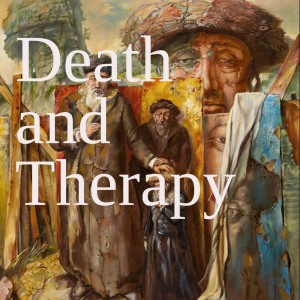
Tuesday Jun 21, 2022
Tuesday Jun 21, 2022
Find more free resources on the website: https://www.gettherapybirmingham.com/
In my house, like in most houses in America there is a fireplace. My wife and I do not often use our fireplace. In fact, I am not even sure if it works. Now that there are more efficient forms of heating installed in most homes there is really no need for fireplaces, but they continue to be built all the same. Any interior decorator or homemaker worth their salt will tell you that whether or not a fireplace works it cannot be blocked, and furniture must be placed so that people can gather around it. The style of houses that we build today are still based on the same basic floor plan of the ancient Roman style of architecture. In Rome, houses were built around a lares, or hearth fires, where penates, ancestral gods of the family, were revered and guarded the home.
Even though most Americans could not tell you why the hearth is afforded such significance, it is still agreed upon in western design language that the hearth is significant. The origin of the hearth idea in western architecture is one example of the many ways that the religious impulse indirectly recognizes a connection to our ancestors. As humans we long for transpersonal and trans-generational connectedness. Jungian oriented therapists help clients cultivate the transcendental and reflective skills that a well-developed spiritual dimension brings into our lives.
Inhale, exhaleForward, backLiving, dying:Arrows, let flown each to eachMeet midway and sliceThe void in aimless flightThus I return to the source.
–Japanese Death PoemGesshu Soko, died January 10, 1696, at age 79:
Stephen Jenkins is a palliative care counselor and writer that I admire. In his writing, he makes the argument that western culture has an unhealthy avoidance of the reality of death. Jenkins writes that that the fear of death in our society has robbed us of a spiritual dimension and tools for everyday life that ancient civilizations have always had. Acceptance of one’s own mortality and acknowledging one’s ancestors are directly related concepts. Jenkins’ argument is that acceptance of death is what gives a culture the ability to make meaning and understand its own story. If we deny or disregard death as an important part of our human experience, then we can never make meaning of our own lives. We must embrace this important part of our humanity if we are to be able to make ourselves whole (Wilson, T 2009).
As a society we hide children from the dying, and often even from the elderly; not allowing young people to understand this important stage in the life journey. We do not value the wisdom of the aged; we simply treat their cultural experience as out of date. It is our general cultural practice to pretend that we are immortal. We hide from death and all the trappings of death until it is too late. We wait until we are at the end of our life journey and we have not developed any tools to help us understand how to die. This practice is to our own deficit and the deficit of our culture. Jenkins argues in his interviews that our culture needs to embrace death and the process of dying in order to reclaim the spirituality our culture has lost (Wilson, T 2009).
It’s your life. You don’t know how long it’s going to be but you know it’s got a bad ending.
–Don DraperMad Men; Season 2, Episode 9
Spirituality in most religions contains a meditative or contemplative component used to orient one’s priorities, clarify goals and values, and discover one’s own personal identity and agency within the world. Although spirituality is a vague concept that can mean many things to many people, most therapists agree on the importance of spirituality in the therapeutic process. One of the major benefits of spirituality in therapy is that spirituality assists clients in understanding their place in the world, and helps clients accept their own finitude and mortality. This is true whether a person’s spiritual tradition advocates belief in an afterlife, a multi-layered reality, or simply a scientific materialist understanding of the world. Regardless of an individual’s spiritual tradition, an active spiritual life will help a therapist engage an individual in important reflective personal questions.
Personal spirituality is different from organized religion. Developing one’s own personal spirituality distinct from the organized religion you participate in is important because it allows individuals to answer questions and face struggles unique to their own life. There is much diversity between different individuals’ life course trajectories. What works for one person may not work for another person. Developing one’s own personal spiritual dimension inside or outside of an organized religion increases an individual’s self-efficacy and individual human capacity for choice-making.
A robust spiritual dimension allows individuals to solve problems that arise in the life course in the best way for them, according to their own strengths and weaknesses. This self-efficacy is an important protective factor for individuals as they develop throughout the life course. This protective factor can help individuals avoid many problems as they traverse the various stages of life.
In the book The Denial of Death, Ernest Becker puts forth a hypothesis that won him the Pulitzer Prize, and changed the way many cognitive theorists thought about therapy. Becker argued that human cognition is a defense mechanism against the knowledge that we must die. Many drives within humanity are attempts to make ourselves immortal and find ways of obtaining spiritual immortality. Becker put forward the idea that anxiety, depression, and even psychosis can be attributed to the breakdown in our immortality seeking processes. Becker argued that human beings long for secular and religious accomplishments because we believe that these will make us immortal. Becker argued that cognitive problems arise when our culture lacks the spiritual and numinous dimension that allows us to understand death and accept our finitude (Becker, E. 1973).
The part of Becker’s theory that is most applicable to therapy and social work practice is his idea of immortality. Becker’s idea of immortality is much more involved than simply an idea of an afterlife in popular culture and religion. In The Denial of Death immortality is the way that a person finds their significance, self-worth, and meaning in relation to the universe (Becker, E. 1973).
We attain spiritual immortality when we have a well-developed spiritual dimension that allows us to feel connected to the past, others in the present and to future generations. It is this connectedness that allows us to feel spiritually immortal and come to terms with our mortality. In the ancient world heroic deeds and religious traditions were an attempt to feel connectedness to a numinous reality larger than the time ancients lived within. Becker argues that nothing but spirituality of some kind can give humans the connectedness to the fabric of our world and provide us the spiritual immortality we long for.
One of the reasons that Becker’s theories were so successful is that they build on the basic assumption that all human beings know at a fundamental level that we will one day die. Because of this we are all in a sense already dead. This knowledge is an intrinsic part of our humanity that we must learn how to handle, or it will lead us to destroy ourselves. The reason that this is important to include in a discussion of spirituality in psychotherapy practice is that this theory of therapy makes spirituality an essential component in the therapeutic process. The problem of death in our own and in our clients’ lives must be solved in order to live a fulfilling life. This cannot be done without the transcendent quality of spiritual practice.
In my own life I find Becker’s spiritual immortality in what will be preserved of me in how I change the world for the better. I personally have no interest in the concept of the afterlife in my own religious tradition, but I do not need that to feel motivated and important. Sharing love that changes the lives of those around me and the lives of those they will touch is where I find immortality. What will be preserved of me is the impression that I leave on this world through how I live my life and affect the lives of others.
The presence of me will be preserved by people who likely do not recognize or understand what they are preserving. We are all released into the earth, and into the stuff of the heart, and the mind, the character of others, and the lives of everyone who antecedes us. A piece of the things that are part of me will become part of everyone whom I become a part of. The things that made me who I am did not come only from me; but also from those before me and how they shaped the world. The juice of ourselves was never ours, but something we borrowed from countless others. This is not something that would make sense to everyone, but it is what makes sense to me.
Life is chaotic and overwhelming to the best of us. To understand it we need a lens to view our world in a way that makes sense to us. When we develop our own spiritual dimension it can act as the lens that lets us understand our world. Our personal spirituality tells us why we are unique and special. It gives us the immortality that Becker describes in a way that we decide is important to us. A robust spiritual dimension can help us live life intentionally, mindfully and effectively.
Bibliography
Wilson, T., Clarke, A., Lorber HT Digital, Alive Mind Media, & National Film Board of Canada (2009). Griefwalker. United States: Alive Mind.
Becker, E. (1973). The denial of death. New York: Free Press.
Weil, A. (2005). Healthy aging: A lifelong guide to your physical and spiritual well-being. New York: Alfred A. Knopf.
Website: https://gettherapybirmingham.com/Check out the youtube: https://youtube.com/@GetTherapyBirminghamPodcast Website: https://gettherapybirmingham.podbean.com/Podcast Feed: https://feed.podbean.com/GetTherapyBirmingham/feed.xmlTaproot Therapy Collective2025 Shady Crest Drive | Hoover, Alabama 35216Phone: (205) 598-6471Fax: (205) 634-3647 Email: Admin@GetTherapyBirmingham.comThe resources, videos and podcasts on our site and social media are no substitute for mental health treatment. Please find a qualified mental health provider and contact emergency services in your area in the event of an emergency to a provider in your area. Our number and email are only for scheduling at Taproot Therapy Collective are not monitored consistently and not a reliable resource for emergency services.

Tuesday Jun 21, 2022
🌗Jungian Shadow Work Meditation for Integration
Tuesday Jun 21, 2022
Tuesday Jun 21, 2022
To subscribe to the podcast, you can click on the following 🎧🌟 Podcast link:
https://gettherapybirmingham.podbean.com/
Check out our youtube for more meditations and content: https://youtu.be/_FP6w_TapXE
Check out our website for more resources: GetTherapyBirmingham.com
For additional free resources, you can visit the Get Therapy Birmingham website: 💻 GetTherapyBirmingham.com
One of the available resources on the website is a meditation designed to help you connect with the shadow part of yourself, which may have been repressed due to trauma or negative experiences. This meditation aims to bring awareness to the aspects of yourself that you may avoid.
Please note that the resources, videos, and podcasts provided on the site and social media platforms are not a substitute for mental health treatment. If you require professional assistance, it is important to seek help from a qualified mental health provider. In case of an emergency, please contact emergency services or a local mental health provider. The provided phone number and email address are for scheduling purposes at Taproot Therapy Collective and may not be regularly monitored for emergencies.
For more information and to explore additional content, you can visit the Taproot Therapy Collective website:
Website: https://gettherapybirmingham.com/Check out the youtube: https://youtube.com/@GetTherapyBirminghamPodcast Website: https://gettherapybirmingham.podbean.com/Podcast Feed: https://feed.podbean.com/GetTherapyBirmingham/feed.xmlTaproot Therapy Collective2025 Shady Crest Drive | Hoover, Alabama 35216Phone: (205) 598-6471Fax: (205) 634-3647 Email: Admin@GetTherapyBirmingham.comThe resources, videos and podcasts on our site and social media are no substitute for mental health treatment. Please find a qualified mental health provider and contact emergency services in your area in the event of an emergency to a provider in your area. Our number and email are only for scheduling at Taproot Therapy Collective are not monitored consistently and not a reliable resource for emergency services.
#depthpsychology #meditation #meditate #integration #jung #carljung #psychology #asmr #trauma #healing #growth #shadow #alchemy #creativity

Tuesday Jun 21, 2022
Tuesday Jun 21, 2022
Read the article on Mr. Krier's work here: https://gettherapybirmingham.medium.c...
Leon Krier is uncompromising in his philosophy of design and philosophy of architecture. His vision of the past and future make him a controversial figure. He is one of the key figures in the founding of the new urbanism movement. Krier's architectural theory is fixated on designing permanent construction that will endure both physically and stylistically. His theoretical orientation is highly informed by the peak oil movement of the 1970's, but the implications are important for an urban and architectural future that is sustainable.
Website: https://gettherapybirmingham.com/Check out the youtube: https://youtube.com/@GetTherapyBirminghamPodcast Website: https://gettherapybirmingham.podbean.com/Podcast Feed: https://feed.podbean.com/GetTherapyBirmingham/feed.xmlTaproot Therapy Collective2025 Shady Crest Drive | Hoover, Alabama 35216Phone: (205) 598-6471Fax: (205) 634-3647 Email: Admin@GetTherapyBirmingham.comThe resources, videos and podcasts on our site and social media are no substitute for mental health treatment. Please find a qualified mental health provider and contact emergency services in your area in the event of an emergency to a provider in your area. Our number and email are only for scheduling at Taproot Therapy Collective are not monitored consistently and not a reliable resource for emergency services.
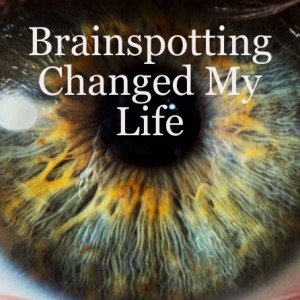
Monday Jun 20, 2022
Monday Jun 20, 2022
Subscribe to the transformative podcast: 🎧✨ www.GetTherapyBirmingham.com
#GetTherapyBirminghamPodcast
Discover more invaluable resources on the website: 🆓📚 #FreeResources
Experience the life-changing yet unintrusive therapy method: 🧠💫 #Brainspotting
Supported by the latest neuroscience, Brainspotting helps reshape your interactions with the world: 🧠🔬 #NeuroscienceTherapy
In a Brainspotting session, therapists use a pointer to identify eye positions associated with traumatic events or emotional and physical reactions: 👀🎯 #TraumaHealing
Reprocessing with Brainspotting enables recognition and release of underlying emotions, muscle tensions, and stress responses: 💪💔 #EmotionalHealing
Remember, the resources provided are not a substitute for mental health treatment. Seek qualified providers and emergency services in your area when needed: 🆘🌍 #MentalHealthSupport
For more information, visit Taproot Therapy Collective: 🌿🤝 #TaprootTherapyCollective
Website: https://gettherapybirmingham.com/Check out the youtube: https://youtube.com/@GetTherapyBirminghamPodcast Website: https://gettherapybirmingham.podbean.com/Podcast Feed: https://feed.podbean.com/GetTherapyBirmingham/feed.xmlTaproot Therapy Collective2025 Shady Crest Drive | Hoover, Alabama 35216Phone: (205) 598-6471Fax: (205) 634-3647 Email: Admin@GetTherapyBirmingham.comThe resources, videos and podcasts on our site and social media are no substitute for mental health treatment. Please find a qualified mental health provider and contact emergency services in your area in the event of an emergency to a provider in your area. Our number and email are only for scheduling at Taproot Therapy Collective are not monitored consistently and not a reliable resource for emergency services.
Unlock the power of Brainspotting for healing and recovery: 🧠💪 #TransformationTherapy #HealingJourney
#Brainspotting #EMDR #TraumaTherapy #Psychology #PTSD #DID #IFS #Anxiety #Alabama #Birmingham #MentalHealth #Recovery
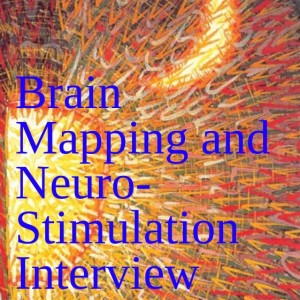
Friday May 27, 2022
🧠Brain Mapping and Neurostimulation Interview with Peak Neuroscience
Friday May 27, 2022
Friday May 27, 2022
Peak Neuroscience has clinics in Dallas Texas and Birmingham Alabama. Their Neuro stimulation and brain mapping treatment pairs neurofeedback EEG with a neurostimulation device that targets specific parts of the brain. Neurostimulation has been proven to reduce the symptoms of PTSD, Autism, Dissociation and many other disorders.
Website: https://gettherapybirmingham.com/Check out the youtube: https://youtube.com/@GetTherapyBirminghamPodcast Website: https://gettherapybirmingham.podbean.com/Podcast Feed: https://feed.podbean.com/GetTherapyBirmingham/feed.xml
Taproot Therapy Collective2025 Shady Crest Drive | Hoover, Alabama 35216Phone: (205) 598-6471Fax: (205) 634-3647 Email: Admin@GetTherapyBirmingham.com
The resources, videos and podcasts on our site and social media are no substitute for mental health treatment. Please find a qualified mental health provider and contact emergency services in your area in the event of an emergency to a provider in your area. Our number and email are only for scheduling at Taproot Therapy Collective are not monitored consistently and not a reliable resource for emergency services.
#Jung #Therapy #psychology #EMD #DepthPsychology #anthropology #sociology #philosophy #mythology #psychology #psychotherapy

Sunday May 22, 2022
🏺Living on the Inside of History - www.GetTherapyBirmingham.com
Sunday May 22, 2022
Sunday May 22, 2022
🌟 At every age, we anticipate feeling different, but do we truly change? Join us on a journey through adulthood, realizing that grown-ups are simply larger children. 🧒👨👩🧓 #AgeIsJustANumber #Adulting
💑 My partner and I grew up together, only to find ourselves puzzled by the seeming irresponsibility of adults our age. We pondered the existence of "adult police." 🚔😮 #AdultingDilemmas #GrowingUpTogether
🌍 As time passes, we struggle to accept that the world around us evolves, bringing unforeseen changes. What if our society, culture, and norms can never be the same again? 🔄❓ #ChangeIsInevitable #EverChangingWorld
📚 History teaches us valuable lessons, but we often detach ourselves, believing that these events are reserved for others. We long to learn from the past while remaining exempt from its consequences. 📖🧠🔍 #LearnFromHistory #Detachment
Join the conversation about #existentialism, #history, #time, #therapy, #depthpsychology, #existentialtherapy, #irvinyalom, #growth, #selfhelp, #ancienthistory, #jung, #philosophy, and #psychology. 🌌📚💭💡 #PodcastDiscussion
Website: https://gettherapybirmingham.com/Check out the youtube: https://youtube.com/@GetTherapyBirminghamPodcast Website: https://gettherapybirmingham.podbean.com/Podcast Feed: https://feed.podbean.com/GetTherapyBirmingham/feed.xml
Taproot Therapy Collective2025 Shady Crest Drive | Hoover, Alabama 35216Phone: (205) 598-6471Fax: (205) 634-3647 Email: Admin@GetTherapyBirmingham.com
The resources, videos and podcasts on our site and social media are no substitute for mental health treatment. Please find a qualified mental health provider and contact emergency services in your area in the event of an emergency to a provider in your area. Our number and email are only for scheduling at Taproot Therapy Collective are not monitored consistently and not a reliable resource for emergency services.
#Jung #Therapy #psychology #EMD #DepthPsychology #anthropology #sociology #philosophy #mythology #psychology #psychotherapy

Monday May 16, 2022
💉Interview with Dr. Harrison Irons from Southern Ketamine and Wellness
Monday May 16, 2022
Monday May 16, 2022
Discover a wealth of free resources: 🆓💡 #FreeResources Learn about medical IV Ketamine treatment from Southern Ketamine and Wellness: 💉✨ #KetamineTreatment Dr. Harrison Irons sheds light on the process and benefits of ketamine infusions: 🌟🌿 #ExpertInsights Uncover the potential of ketamine in treating PTSD, panic disorders, dissociation, mood disorders, and chronic pain: 💪🌈 #HolisticHealing Website: https://gettherapybirmingham.com/ Please note that the resources, videos, and podcasts provided on the website and social media platforms are not a substitute for mental health treatment. It is important to seek assistance from a qualified mental health provider in your area. In case of an emergency, please contact the appropriate emergency services. Join the supportive community at Taproot Therapy Collective: 🌱
Website: https://gettherapybirmingham.com/Check out the youtube: https://youtube.com/@GetTherapyBirminghamPodcast Website: https://gettherapybirmingham.podbean.com/Podcast Feed: https://feed.podbean.com/GetTherapyBirmingham/feed.xml
Taproot Therapy Collective2025 Shady Crest Drive | Hoover, Alabama 35216Phone: (205) 598-6471Fax: (205) 634-3647 Email: Admin@GetTherapyBirmingham.com
The resources, videos and podcasts on our site and social media are no substitute for mental health treatment. Please find a qualified mental health provider and contact emergency services in your area in the event of an emergency to a provider in your area. Our number and email are only for scheduling at Taproot Therapy Collective are not monitored consistently and not a reliable resource for emergency services.
#Jung #Therapy #psychology #EMD #DepthPsychology #anthropology #sociology #philosophy #mythology #psychology #psychotherapy

Wednesday Apr 06, 2022
🧐How do you Brainspot Patients With Severe Dissociation? - www.GetTherapyBirmingham.com
Wednesday Apr 06, 2022
Wednesday Apr 06, 2022
Brainspotting: Exploring Processing and Aftercare ✨
Address:
2025 Shady Crest Dr
Suite 203
Hoover, AL 35216
Email: Admin@GetTherapyBirmingham.com
Maps: https://goo.gl/maps/cnverPNUPuxiPkbc8
Podcast: https://gettherapybirmingham.podbean.com/
Phone: (205) 598-6471
Fax: 205-634-3647
#Brainspotting #TraumaTherapy #MentalHealth #Healing #Processing #EmotionalWellbeing #TherapyJourney #SelfCare #TaprootTherapyCollective #GetTherapyBirmingham #Support #Guidance
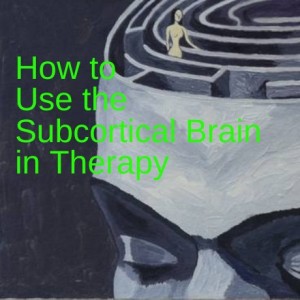
Monday Apr 04, 2022
🤯How to Use the Subcortical Brain in Therapy - www.GetTherapyBirmingham.com
Monday Apr 04, 2022
Monday Apr 04, 2022
Address:
2025 Shady Crest Dr
Suite 203
Hoover, AL 35216
Email: Admin@GetTherapyBirmingham.com
Maps: https://goo.gl/maps/cnverPNUPuxiPkbc8
Podcast: https://gettherapybirmingham.podbean.com/
Phone: (205) 598-6471
Fax: 205-634-3647
and psychological insights: 🌊💡 #DepthPsychology Tap into the transformative resources available at Taproot Therapy Collective: 🌱✨ #TransformativeHealing Website: https://gettherapybirmingham.com/ Address: 2025 Shady Crest Dr Suite 203 Hoover, AL 35216 Email: Admin@GetTherapyBirmingham.com Maps: https://goo.gl/maps/cnverPNUPuxiPkbc8 Podcast: https://gettherapybirmingham.podbean.com/ Phone: (205) 598-6471 Fax: 205-634-3647 Uncover the path to healing and growth: 🌟💚 #HealingJourney #therapy #psychotherapy #jung #depthpsychology #trauma #PTSD #CPTSD #Brainspotting #Birmingham #Alabama #therapist #Psilocybin #psychadelic #ayahuasca
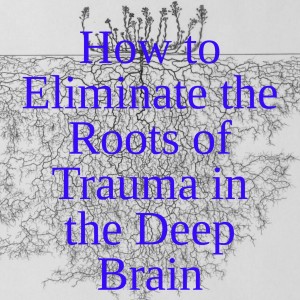
Tuesday Mar 29, 2022
Tuesday Mar 29, 2022
Trauma is stored in a part of the brain that lies beneath language, cognition, and the ego. To effectively heal the effects of trauma, it is necessary to explore the roots of trauma in the subcortical brain. Therapists must begin with the visible symptoms in the cognitive process and delve beneath the surface into the subcortical brain. The roots of trauma impact our emotional system, and the deepest aspects of trauma lie in the way our physical body reacts to stimuli and emotions. By letting go of the ego and tapping into the creative and intuitive aspects of the deep brain, we can heal trauma.
It's important to note that the resources, videos, and podcasts provided on the website and social media are not a substitute for mental health treatment. If you require assistance, please seek a qualified mental health provider, and in case of emergencies, contact the appropriate emergency services in your area. The contact information provided is for scheduling purposes at Taproot Therapy Collective and is not monitored consistently for emergency services.
For further information, please refer to:
Address:
2025 Shady Crest Dr
Suite 203
Hoover, AL 35216
Email: Admin@GetTherapyBirmingham.com
Maps: https://goo.gl/maps/cnverPNUPuxiPkbc8
Podcast: https://gettherapybirmingham.podbean.com/
Phone: (205) 598-6471
Fax: 205-634-3647
#Brainspotting #EMDR #Trauma #PTSD #DID #CPTSD #Psychology #Neuroscience #Brain #Therapy #Psychotherapy #sensorimotorpsychotherapy #somaticexperiencing #carljung #emotion

Sunday Mar 27, 2022
Sunday Mar 27, 2022
Address:
2025 Shady Crest Dr
Suite 203
Hoover, AL 35216
Email: Admin@GetTherapyBirmingham.com
Maps: https://goo.gl/maps/cnverPNUPuxiPkbc8
Podcast: https://gettherapybirmingham.podbean.com/
Phone: (205) 598-6471
Fax: 205-634-3647
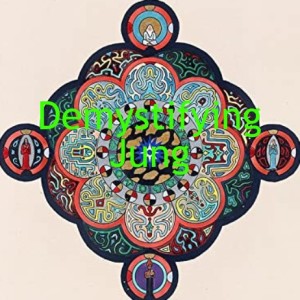
Sunday Mar 27, 2022
🦋Demystifying Carl Jung - www.GetTherapyBirmingham.com
Sunday Mar 27, 2022
Sunday Mar 27, 2022
Subscribe to the podcast and delve into intriguing topics like astrophobia and its connection to trauma patients' fear of space: 🎧 https://GetTherapyBirmingham.podbean.com/e/astrophobia-why-are-so-many-trauma-patients-afraid-of-space/ Explore a wealth of free resources on our website to support your journey: 🌐 https://www.gettherapybirmingham.com/ Jung, a multifaceted figure, ventured into parapsychology and ESP, pushing the boundaries of psychology. While he didn't define the limits of his psychology, his legacy birthed "depth psychology," studying archetypal images within the collective unconscious in fields such as sociology, anthropology, creative writing, and comparative religion. Jungian psychology stands apart, focusing on growth and self-discovery throughout life. Instead of symptom reduction, it aims to help individuals explore their desires and express their true selves through creativity. Join us on this transformative path. For more information, visit
Address:
2025 Shady Crest Dr
Suite 203
Hoover, AL 35216
Email: Admin@GetTherapyBirmingham.com
Maps: https://goo.gl/maps/cnverPNUPuxiPkbc8
Podcast: https://gettherapybirmingham.podbean.com/
Phone: (205) 598-6471
Fax: 205-634-3647

Sunday Mar 27, 2022
Sunday Mar 27, 2022
This is a free mindfulness meditation for relaxation and processing anxiety.Mindfulness works because in the present moment there is usually not that much to worry about. Maybe we are a little tired, or hungry, maybe it is cold, but there is not much to deeply upset us.
Find more free resources on the website: https://www.gettherapybirmingham.com/
To subscribe to the podcast, you can click on the following link: 🎧🌟 Podcast
For additional free resources, you can visit the Get Therapy Birmingham website: 💻 GetTherapyBirmingham.com
One of the available resources on the website is a meditation designed to help you connect with the shadow part of yourself, which may have been repressed due to trauma or negative experiences. This meditation aims to bring awareness to the aspects of yourself that you may avoid.
Please note that the resources, videos, and podcasts provided on the site and social media platforms are not a substitute for mental health treatment. If you require professional assistance, it is important to seek help from a qualified mental health provider. In case of an emergency, please contact emergency services or a local mental health provider. The provided phone number and email address are for scheduling purposes at Taproot Therapy Collective and may not be regularly monitored for emergencies.
For more information and to explore additional content, you can visit the Taproot Therapy Collective website:
Address:
2025 Shady Crest Dr
Suite 203
Hoover, AL 35216
Email: Admin@GetTherapyBirmingham.com
Maps: https://goo.gl/maps/cnverPNUPuxiPkbc8
Podcast: https://gettherapybirmingham.podbean.com/
Phone: (205) 598-6471
Fax: 205-634-3647
#depthpsychology #meditation #meditate #integration #jung #carljung #psychology #asmr #trauma #healing #growth #shadow #alchemy #creativity
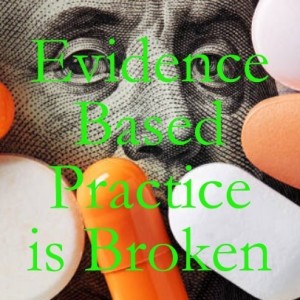
Saturday Mar 26, 2022
💔Evidence Based Practice is Broken, How to Fix Research - GetTherapyBirmingham.com
Saturday Mar 26, 2022
Saturday Mar 26, 2022
Address:
2025 Shady Crest Dr
Suite 203
Hoover, AL 35216
Email: Admin@GetTherapyBirmingham.com
Maps: https://goo.gl/maps/cnverPNUPuxiPkbc8
Podcast: https://gettherapybirmingham.podbean.com/
Phone: (205) 598-6471
Fax: 205-634-3647
Embrace the power of self-discovery and healing: 💫💚 #SelfGrowth
#phd #insurance #therapy #academia #healthcare #trauma #Brainspotting #EMDR #psychotherapy #self #growth #change #research #academicjournal #impactfactor
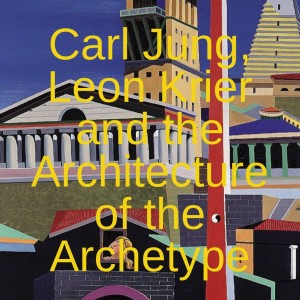
Thursday Mar 17, 2022
Thursday Mar 17, 2022
Find more free resources on the website: https://www.gettherapybirmingham.com/
“Truth of feature is related to truth of being”
- Frank Lloyd Wright
What does the building in the dream look like?
How does the space make you feel?
During dream work and active imagining, I often ask clients these questions. Many times clients lack any formal training in architectural style or the history of design. When I name the specific architectural styles or design traditions present in client’s dreams they often draw a blank on the names. When I ask them if the design elements of those styles are present then I get “Oh yeah! The stone had this blocky spiraly pattern.” or “The columns had this simple shape over and over like in [X] movie”. People remember how the spaces they were in made them feel first and the details about those same spaces second. In dreams buildings have a symbolic and metaphorical component.
Architects and design professionals will tell you, people don’t always consciously notice the space they are in. Yet people unconsciously feel the interiors they inhabit in an intuitive way. “Clean up your house” is one of the early mandates that many cognitive therapists will prescribe to patients under the assumption that their space becoming more orderly in the exterior will reorder their interior cognition.
Jung began developing his theory of archetype when he was working with psychotic and impoverished persons that had no exposure to anthropology or mythological theory. Yet Jung observed these persons’ psychotic episodes and hallucinatory events often were exact descriptions of ancient Babylonian and Persian mythology. Jung’s conclusion was that the images and symbols of unconscious are often “collective” or universal amongst all humans due to their shared evolutionary history.
Are there archetypal elements of architecture, in the same way that their primal elements of consciousness?
As I said before, when I mention to clients during dream work specific architectural styles; Incan revival, Frank Lloyd Wright, Danish modern; they often draw a blank. Yet when I ask them for details about the structures they have experienced many of the specific details of these styles of design through the psyche in their dream world. Are there archetypal visual patterns that come from our unconscious? Carl Jung thought that the unconscious spoke in symbols through myth and dreams. He saw metaphor as a way that our psyche could tell us deeper truths than language and consciousness alone could contain. It would make sense that the unconscious also speaks through the houses and cities we build to contain our lives.
Design itself is a kind of symbol. In the same way that a poem or song can make us feel something that is not present in the literal meaning of its text. Just like a poem is more than a list or a story, architecture is more than creating a structure that won’t fall down. Like poetry, the arrangements of structural elements in architecture gesture towards a greater meaning than merely practical purpose. Architecture is meant to impart an emotional story, and sense of structural purpose. The point of a well designed building is to have an effect on our psyche.
The interpretation of dreams enriches consciousness to such an extent that it relearns the forgotten language of the instincts.
~Carl Jung, Man and His Symbols, Page 52.
The set designer of the 1982 film Bladerunner (Lawrence G. Paull) did an interview once that I found fascinating. Paull explained that the world in the script of Bladerunner lacked any exposition. Paul said he built three sets over each set. In the first set there was high technology overlaid over a previously mechanical world. In the second set people had overlaid the infrastructure for wireless technological revolution over this first tactile-technical world. On the third layer of the set that he built, Paul over lapped vandalism and security devices. The script doesn’t tell the audience the history of the world, but the audience intuits the history based on the design of the world. The audience feels the conflicting sense of an optimistic and hopeful world overlain with a cynical and hopeless future. Here the subconscious elements of design are used to tell a story.
Our sub-cortical body brains, that Jung described as our unconscious, evolved to feel our deep emotional and intuitive experiences at a level beneath cognition. Being aware of how our environment made us feel at an unconscious level kept us alive through prehistory. Our fight or flight system that helps us to “read the room or “know something in the gut” is the core of this system and the oldest evolutionary piece of our brain, with all other parts developing later. The latest neuroscience indicates that the first thing that our infant brain begins to recognize is the basic structure of the faces around us and then, later, the rooms and spaces those faces inhabit. What is it about these spaces that we are designed to recognize from an evolutionary standpoint? Are there deeply unconscious reactions that design and architecture invoke in us?
We have an instinctual reaction to shape and symbol. A dog will bark at a snake shaped stick because the dogs that didn’t bark at that shape died.
Jung’s idea of archetypal postulated that their were structures that underlay consciousness. These structures manifest as psychological patterns that can be observed repeating across history in mythology, politics, and culture. Could they also be found in design? Seldom are the implications of the visual part of archetypes discussed. But yet, aren’t the “element and principals of design” the first thing that a pupil learns in art school?” There is a tacit agreement among design professionals that certain forms of design are good or bad in a way that defies any cognitive or intellectual rule.
Leon Krier Painting in Post Modern Classicsm ArchitectureLeon Krier is one architect who has written about the archetypal elements of structures. Krier has written extensively about the patterns and forms in city planning and their effect on our psychology. Krier is an architect, design theorist, and urban planner. He became famous for his work on Seaside, Florida; Poundbury, England; and Ciudad Cayalá in Guatemala. He was influential to the new urbanism movement. Krier works in a postmodern classicist style. His work striped ornamentation, removed extraneous detail and assembled the oldest and most timeless architectural features. You will recognize many design elements in his drawings that have been a part of architecture since the bronze age.
“The poet does not excel by inventing new words, but when by particular arrangements of otherwise familiar words, he makes us see ourselves in new ways,”
-Leon Krier
Krier’s architecture is interesting to me as a psychotherapist because his work is in conversation with Jung’s ideas and focuses on the psychological reactions that design evokes. Krier felt that the archetypal ideas in architecture were unchanging because they were inborn from the deep psyche. Krier believed that the usage of structure and space should be intuited from design. Much of Krier’s work was built around his study of the way that people think and function. Krier was molding the architecture to the person instead of attempting to mold people with architecture.
Krier and the new urbanist movement designed space that innately fused with the way that humans historically think, feel and live. This clashed with the modernist ideas present at the beginning of Krier’s career. The modernist architects practicing after the middle of the century sought to uproot the structures present in society and transform the way that humans lived through design. In Krier’s notes and doodles he expresses contempt for the hubris and revolutionary tendencies of the disciples of Mies van der Rohe and le Corbusier. The debate of tradition vs progress has been raging in architecture for nearly two centuries.
‘In traditional cultures invention, innovation and discovery are means to improve handed-down systems of communication, representation, thinking and building … in Modernist cultures, by contrast, invention, innovation, and discovery are ends in themselves’
-Leon Krier
Krier is not clinging to tradition and antiquity simple to be anachronistic. Instead Krier is reaching through all of the traditions to find the most fundamental pieces of architecture in their most pure form. Jung’s work in psychology was an attempt to find these same primal forms and the roots of what makes us human. Krier’s insistence on shaving design elements back to their most time honored and simplest forms make his buildings seem like they sprung from dreams or myth. Krier works in with structural archetypes. His buildings often feel like they exist in both all eras and none.
One of Krier’s early projects, Atlantis at Tenerife, was never built. However, elements of it informed thousands of projects that Krier and other architects did build over the next decades. Don’t these renderings look like the setting of a dream? Perhaps Krier did have an intuitive insight into the forms that lurk in our shared unconscious psyche.
In the Dominion of the Dead, Robert Pogue Harrison writes about architecture “Must we change our way of existing before we can change the way we build? Or would changing the way we build change the way we exist?”.
Jung observed that our brains are capable of processing information in both an introverted and extroverted way. Our brains are designed to search the world around us for information but also to have our inner and subjective experiences guide us. We are designed to learn about the world around us through the spaces we inhabit, but also through our own inward journeys. In other words, our thinking is a product of our environment while also our environment is a product of our thinking. Both projects must be undertaken simultaneously. We need creativity in our personal interior and cultural exterior worlds to be whole.
We need both internal and external creativity to be whole. We need to look for the soul of our collective hummanity dually in the patterns of our ancient history and our ability to transcend that history.
The search for the basic structure of the deepest parts of consciousness is something that the field of architecture, like all other creative disciplines, can help us with but not somethings that it can do for us. We can take inspiration from innovation while still recognizing that what makes a design good is how well it resonates with the deepest patterns inborn in our creative human spirit.
Humans make mythology in the same way they make architecture. Both The Odyssey and Star Wars are built on the same mythological framework and describe the same inborn heroic process within us. Both are one attempt to tell the same story with in our own ongoing human story. Both are using the same elements to tell the same story, yet both stories are different. We are driven to describe over and over again the patterns and voices, shapes and spaces that we sense from within our own soul.
The debate between modernism and traditionalism in design is a flawed one when it assumes only environment or self determines reality. We can neither completely control society through building nor can we find inner peace and natural order while living in a creatively devoid chaotic wasteland. The journey to find and know the self through creativity is both a collective and personal one. It is through discovering how to build that we can find ourselves and through finding ourselves that we discover how to build.
Address:
2025 Shady Crest Dr
Suite 203
Hoover, AL 35216
Email: Admin@GetTherapyBirmingham.com
Maps: https://goo.gl/maps/cnverPNUPuxiPkbc8
Podcast: https://gettherapybirmingham.podbean.com/
Phone: (205) 598-6471
Fax: 205-634-3647
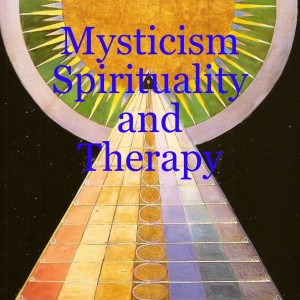
Monday Mar 14, 2022
🛐☯️⚕️Mysticism, Spirituality and Therapy - www.GetTherapyBirmingham.com
Monday Mar 14, 2022
Monday Mar 14, 2022
Website: https://gettherapybirmingham.com/Check out the youtube: https://youtube.com/@GetTherapyBirminghamPodcast Website: https://gettherapybirmingham.podbean.com/Podcast Feed: https://feed.podbean.com/GetTherapyBirmingham/feed.xml
Taproot Therapy Collective2025 Shady Crest Drive | Hoover, Alabama 35216Phone: (205) 598-6471Fax: (205) 634-3647 Email: Admin@GetTherapyBirmingham.com
The resources, videos and podcasts on our site and social media are no substitute for mental health treatment. Please find a qualified mental health provider and contact emergency services in your area in the event of an emergency to a provider in your area. Our number and email are only for scheduling at Taproot Therapy Collective are not monitored consistently and not a reliable resource for emergency services.
#Jung #Therapy #psychology #EMD #DepthPsychology #anthropology #sociology #philosophy #mythology #psychology #psychotherapy

Taproot Therapy is a collective of therapists who share resources to create a more efficient way to offer services for self discovery, growth and healing in Birmingham. We offer the most cutting edge neuroscientifically backed treatment for PTSD, trauma and anxiety. Brainspotting, EMDR, somatic therapies for trauma and IFS, Jungian therapy, meditation and mindfulness are just a few of our clinicians modalities. We believe that therapy is about more than reducing symptoms. Taproot Therapy Collective does not use “one size fits all” therapy models. Instead we try to personally understand each patient and help reconnect them with the journey that their life calls them toward. We make no presumptions about who you are or where you are going. The clinicians at Taproot Therapy Collective only want to help you find yourself and to find the way to where your journey calls you.
google-site-verification: googled8f8d420ccfcdf36.html










